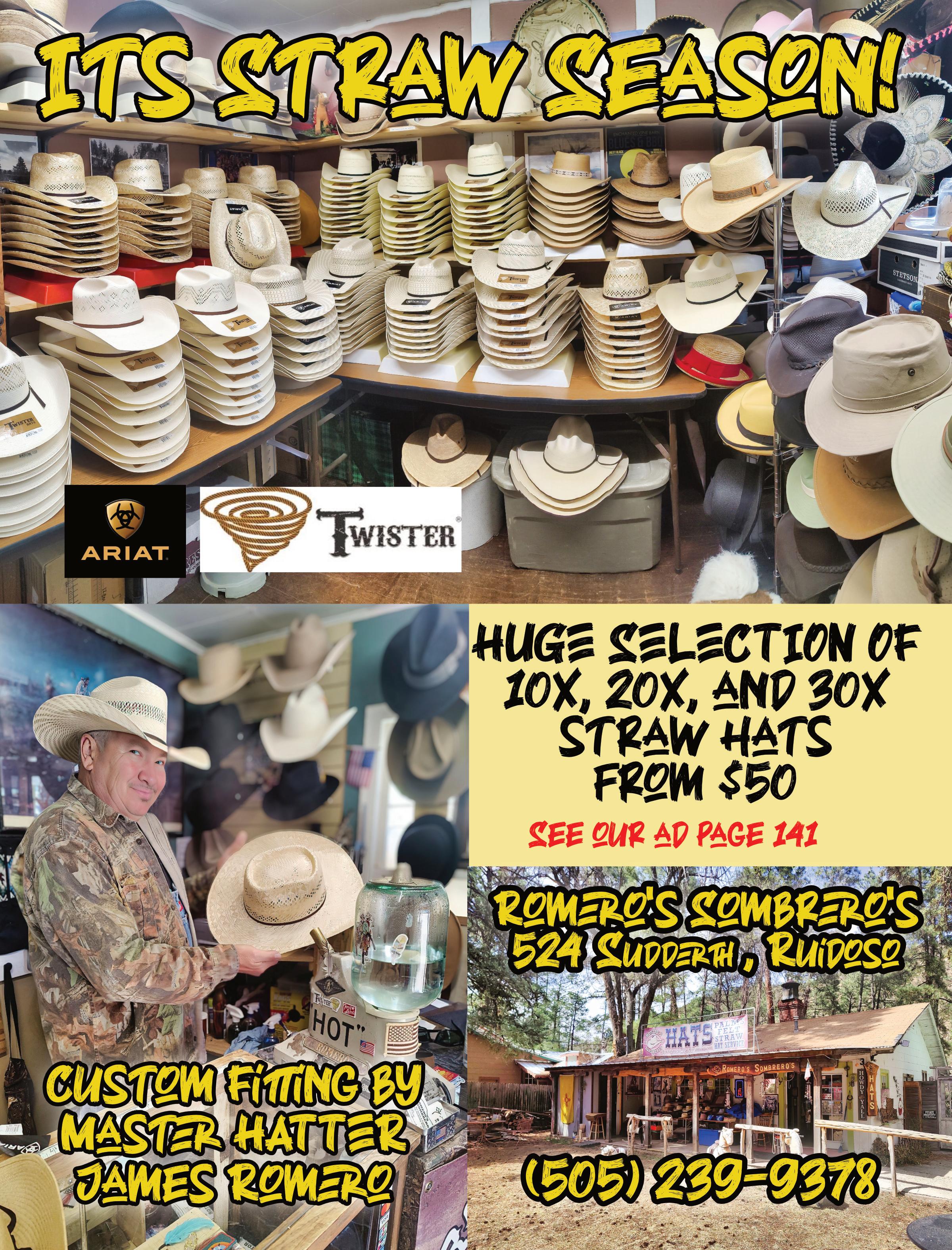




june 13th, 14th, 15th see ad page 16


june 13th, 14th, 15th see ad page 16






june 13th, 14th, 15th see ad page 16


june 13th, 14th, 15th see ad page 16
Sharon Holmes is a realism oil painter based in Southern New Mexico. She began painting as a preteen when her brother's arts and crafts instructor offered her the chance to teach some of the craft lessons to the 5-8 year olds in exchange for drawing & painting classes.
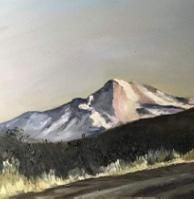
New Mexico is such a large and diverse state. I love to travel around the area and paint what is in my own “back yard”. From the 4 corners area to the Sanger De Christi mountains to the to the White Sands and the high desert plains all around New Mexico, the sights and sounds are so varied and worth of shedding light and shadow on.
She jumped at the opportunity, even then to pay her own way. She was able to continue instruction off and on through out her teen, college and early married years.


She became an elementary school teacher which gave her many opportunities to use the skills she had learned with her students. The advent of child number 3 and 4 and a move to a small, remote community in the mountains as well as adding a nephew and two nieces to her family mean taking a break from painting for a few years.
Through out the next 25 years she invested her creative spirit in needlework, sewing, crochet-ing and baking for the family she was raising, but never giving up her drive to bring peace and joy to those around her.
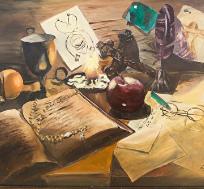
ODE to: paintings are a different kind of portrait. Instead of showing someone physically, I strive to show who that person is by use of highlighting items that tell others who that person is deep down inside. Each chosen item in the still life design tells something about the subject either by what they, themselves say or what others identify with that person.
Sharon paints scenes from her tory continues next
june 13th, 14th, 15th see ad page 16

Growing up in rural southern New Mexico in a family that came into this area by covered wagon in the 1880's, I spent a lot of time in ranch houses belonging to my great aunts and uncles. Many times even in the 60's and 70's they had generator power, well water to be drawn and very simple down to earth lives. Items in each of these paintings represent that easy going and yet determined spirit. I hope these paintings bring to mind people and places that bring you joy as well.
own “back porch” of the White Sands National Park, the Organ Mountains and other places in her beloved New Mexico and the southwest. As well as landscapes, she has found her place painting some of the animals of the desert and mountain southwest.
When she isn’t painting the wide expanses of the Southwest, she is in the studio painting what she calls Homage Portraits.
She doesn’t paint the outside shell of a person, but she takes


items of meaning from their lives that speak of deep places in her subjects core beliefs and thoughts and through the use of vibrant color, cool light and warm shadow she brings out the meaning in the objects to create a portrait of the subject to anyone who knows them.
While she calls southern New Mexico her home, her paintings are already found in private collections around the United States.
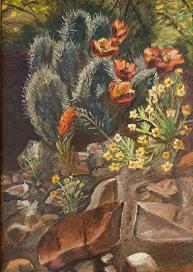
Life in the desert. More of my own back yard. There is beauty everywhere, if you just find it. I strive to bring that beauty to life with the bright highlights and deep shadows created in the Chihuahuan desert of Southern New Mexico.
13th, 14th, 15th see ad page 16
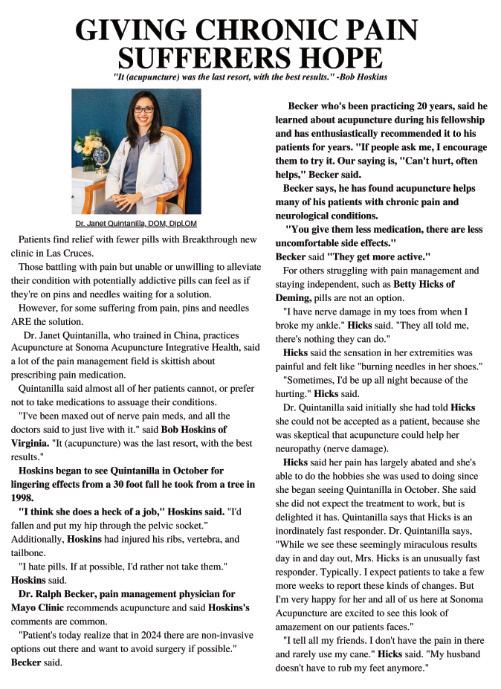

june 13th, 14th, 15th see ad page 16

Model trains have long captivated the imagination of hobbyists, collectors, and enthusiasts of all ages. From their origins as simple tinplate toys to today’s intricate, highly-detailed machinery, model trains trace a fascinating evolution that mirrors advancements in technology and changes in cultural trends. Let’s explore how this beloved hobby developed over the decades.
Model trains first appeared in the late 19th century as simple tinplate toys, often crafted by hand. Companies like Märklin in Germany and Lionel in the United States were pioneers in this space.
Märklin, initially a producer of dollhouse accessories, shifted to manufacturing tinplate trains in the 1890s. Early models were made from stamped metal and

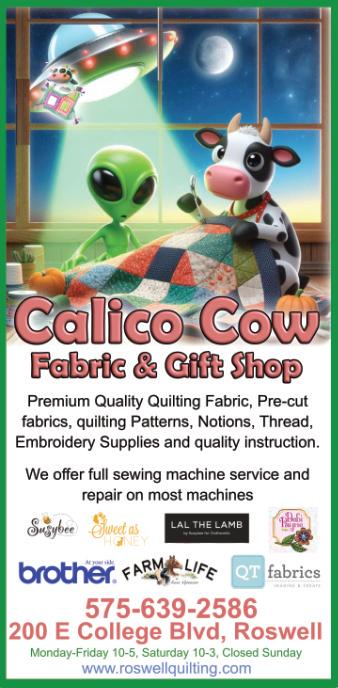
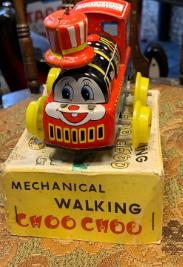
powered by wind-up or clockwork mechanisms – all finely crafted and considered showcases of both engineering and artistry.
By the early 1900s, Lionel began producing electric trains, introducing a new level of realism and interactivity. Their first product, the Electric Express in 1901, was designed as a store display to draw customers' attention, but its popularity quickly grew.
Tinplate trains were often brightly colored, oversized, and durable – designs that captured the imaginations of both children and adults for many decades.
The interwar period and postWorld War II era marked the golden age of model trains.
During the 1920s and 1930s, model trains became more detailed and realistic, catering to both children and adult collectors.
Story continues page13
13th, 14th, 15th see ad page 16


june 13th, 14th, 15th see ad page 16






13th, 14th, 15th
Continued from page 9
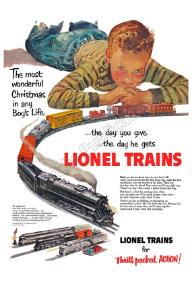
Lionel dominated theAmerican market with its O gauge trains, while European manufacturers like Hornby and Märklin refined their designs to create more realistic models.
During this time, accessories such as buildings, stations, and landscapes became commercially successful, featuring in now iconic media and advertising of the era. Hobbyists began to build entire miniature worlds, and the community started to form clubs and even competitions to showcase their artistry.
This era also saw the rise of smaller scales, such as HO scale (1:87), which originated in Germany in the 1920s. HO scale quickly gained popularity due to its balance between size and detail, enabling hobbyists to create more expansive layouts in less space.
Story continues next page
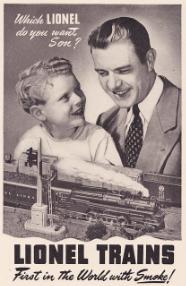
The 1950s brought a boom in the popularity of model trains, fueled by post-war economic prosperity and the advent of mass media. Lionel’s advertising campaigns on television turned their trains into a must-have holiday gift for children, something many of us still associate with this age of Americana today.
By the 1960s, model trains began shifting from toys to collectibles and scale models for serious hobbyists. Enthusiasts focused on replicating real-world railroads in exquisite detail. This era saw the rise of N scale (1:160), which became popular for hobbyists with limited space, as well as innovations like realistic weathering techniques and advanced track layouts.


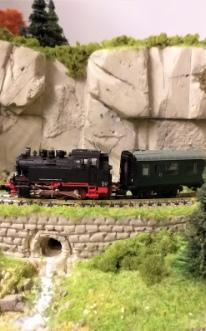
Electric technology improved dramatically during this period. Manufacturers introduced more reliable motors and power systems, while features like lights, sound effects, and smoke generators made trains increasingly lifelike.
The 1980s also brought digital control systems into the hobby. Digital Command Control (DCC), introduced in the late 1980s, allowed hobbyists to control multiple trains independently on the same track. This innovation revolutionized the way model railroads operated, providing unprecedented realism and flexibility.
The modern era of model trains is defined by unparalleled precision and realism. Today, manufacturers like Bachmann, Kato, andAthearn produce models with incredibly june 13th, 14th, 15th see ad page
Story con�nues next page

fine details, from hand-painted lettering to intricate undercarriages. Digital sound decoders can mimic the exact sounds of specific locomotive engines, while LED lighting creates realistic effects.
In addition to realism, customization has become a hallmark of the hobby.
Enthusiasts use 3D printing, laser cutting, and other advanced technologies to create bespoke pieces for their layouts.
Model railroading has also embraced technology in other ways, with smartphone apps and computer programs enabling advanced control and layout design.
Meanwhile, collectors continue to seek out vintage models from Lionel, Märklin, and other classic brands. Rare pieces from the early 20th century can fetch thousands of dollars at auctions, making model train collecting both a passion and an


13th, 14th, 15th see

investment for many enthusiasts.
What makes model trains so enduring? For some, it’s the nostalgia – memories of receiving a Christmas present or building a track with grandpa. For others, it’s the challenge of designing and constructing intricate layouts that bring a miniature world to life.And for many, it’s the appreciation of craftsmanship, whether in a vintage tinplate model or a modern-scale replica.
Model trains have come a long way from their tinplate origins, but their ability to inspire creativity, connect generations, and celebrate the magic of railroads remains timeless.
Story con�nues next page

May’s birthstone is the emerald. This precious birthstone is prized for its rich green color and rarity.
Emeralds are renowned for their beauty and elegance, making them a popular choice for jewelry pieces such as rings, earrings, and necklaces. Their captivating hue adds a touch of luxury and sophistication to any design, making them a beloved choice — particularly for those with May birthdays. Whether worn as a statement piece or as a subtle accent, the emerald birthstone is cherished for its timeless appeal and colorful allure.
Emerald is often used synonymously with the color green and is even regarded as the very definition of the color. The most desirable emerald birthstone colors are bluish green to pure
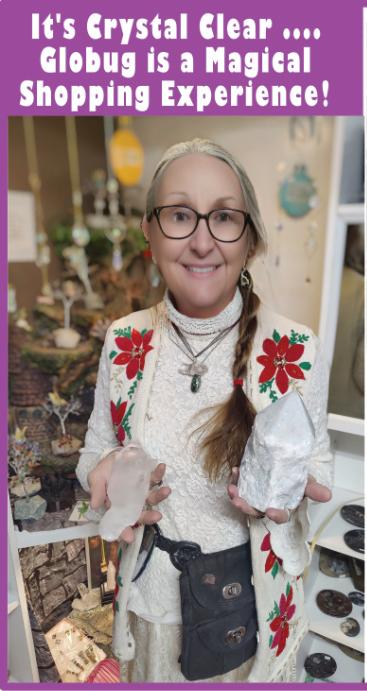

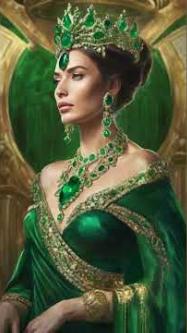
green, with vivid color saturation. Emeralds are characterized by a medium to deep tone, while visually similar gems, such as green beryl, have a lighter color.
In centuries past, this birthstone symbolized fertility and good fortune, and was even thought to cure diseases and restore exhausted travelers. Spiritual traditions and legends held that these gems had the power to make their wearer more intelligent and quick-witted. Emerald lore also claimed that by placing an emerald under the tongue, one could see into the future. Others believed it improved Continues next page june 13th, 14th, 15th see ad page 16


Continued from page 19
the wearer’s eloquence and gave protection against evil spells.
Royalty as far back as Cleopatra adorned their jewelry and crowns with the emerald birthstone.And Roman tradition claimed the gemstone had therapeutic properties for the eyes — which is now partially scientifically proven, as green is recognized to relieve eye strain and stress. Today, in addition to being the birthstone for May, emeralds are also a traditional gift for 20th and 35th wedding anniversaries.
The significance of the emerald as the May birthstone not only symbolizes the renewal associated with spring but also represents truth, wisdom, intuition, foresight, loyalty, abundance, success, and love. Throughout history, this birthstone has held cultural significance – for example, in the ancient cultures of Rome and Greece, emerald birthstones were often linked to the goddess Venus, who symbolized love and hope. Those who wear emeralds can embody these powerful and positive attributes of May’s birthstone symbolism.

13th, 14th, 15th see ad page 16

Ten thousand years before humans developed agriculture or built the first cities in Mesopotamia,Ancient Native Americans trekked across southern New Mexico carrying cargo on wooden travois they dragged behind them.
These early humans crossed what is now White Sands National Park some 22,000 years ago, leaving footprints in the sand showing that they dragged something. They lived concurrently with ancient mammoths and/or mastodons, giant ground sloths and large wolves, during the peak of the last ice age.
Those are among the conclusions scientists revealed in a


paper published last month. The research team examined human footprints and drag marks preserved in five locations in the dolomite sands at White Sands. They concluded that the drag marks were most likely the result of the humans pulling travois.
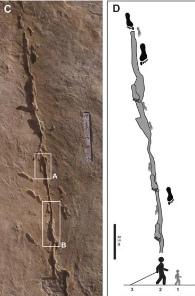
“Atravois is crafted from one or more wooden poles and is one of the simplest prehistoric vehicles.Although these devices likely played vital roles in the lives of ancient peoples, they have low preservation potential in the archaeological record,” the report says.
“Here we describe linear features associated with human footprints, some of which are dated to (approximately) 22,000 years old, preserved in finegrained sediments at White Sands National Park Story continues page 29
june 13th, 14th, 15th see ad page 16

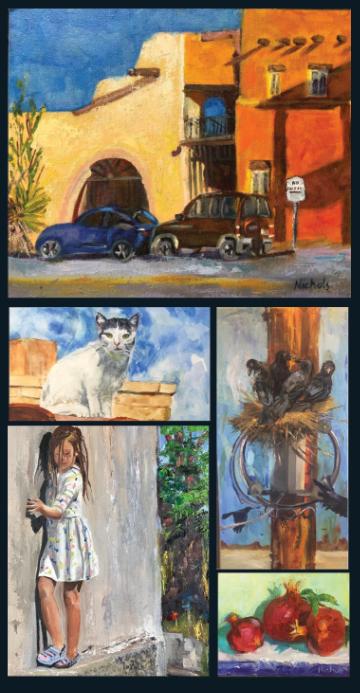

Continued from page 27
The research that produced the paper is a joint effort of scientists working for the National Park Service, U.S. Geological Survey, Bournemouth University in the United Kingdom, and Cornell University, the University ofArizona and the University ofAlaska in the United States. Researchers also consulted with Native Americans living in the region,

The paper reveals the latest conclusions from years of archaeological research into ancient human footprints discovered at White Sands.
Four years ago, the team revealed it had found human


june 13th, 14th, 15th see ad page 16

Dear Son,
I'm writing this slow 'cause I know you can't read fast.
We don't live where we did when you left. Your dad read in the paper that most accidents happen within twenty miles of home, so we moved.
Won't be able to send you the address as the lastArkansas family that lived here took the numbers with them for their house, so they wouldn't have to change their address.
This place has a washing machine. The first day I put four shirts in it, pulled the chain and haven't seen 'em since.
It only rained twice this week, three days the first time and four


14th,
days the second time.
The coat you wanted me to send to you,Aunt Sue said it would be a little too heavy to send in the mail with them heavy buttons, so we cut them off and put them in the pockets.
We got a bill from the funeral home, and it said if we didn't make the final payment on Grandma's funeral bill, up she comes.
About your sister, she had a baby this morning. I haven't found out whether if it is a boy or girls so don’t know if you are anAunt or Uncle???
Your Uncle John fell in the whiskey vat. Some men tried to get him out, but he fought them off playfully, so he drowned.
We cremated him and he burned for three days.
Three of your friends went off the bridge in a pickup. One was driving and the other two were in the back. The driver got out. He rolled down the window and swam to safety. The other 2 drowned. They couldn't get the tailgate down.
Not much more news this time.
Nothing much happened. If you don't get this letter, please let me know and I will send another one.
Love, Mom

• 5 8 inch Tortillas makes about 20 rounds
• 1 cup graham cracker crumbs
• 1/4 cup butter melted
• 1 cup heavy cream
• 1 cup cream cheese softened
• 1 tsp lemon zest
• 1 tsp vanilla
• 1/4 cup powdered sugar
• 1 can cherry pie filling or any flavor (optional)
Instructions
1. -heat oven to 400F. Cut 4-5 rounds out of each tortilla shell


with a cookie cutter to get about 20 shells. Dip each into melted butter then coat in graham cracker crumbs.
2. Flip a muffin tin upside down. Place the tortilla pieces in between muffin cups. Bake 10 minutes until just golden brown. Let cool in pan.
3. Beat cream cheese, heavy cream, powdered sugar, lemon zest and vanilla for 2 minutes, using medium speed, until it thickens. Chill in the fridge for 30 minutes. Transfer to a piping bag.
4. Fill the taco shells with cream cheese filling, and top with 1/2 tsp pie filling. Sprinkle with additional graham cracker crumbs, optional! Enjoy! Pre

13th, 14th, 15th see ad page 16

Named for the Greek Goddess Maia who was the shepherd of plants, the month of May is a time of fertility and beauty and a sign that summer is on its way. More than just the fifth month in the Julian and Gregorian calendars, May is full of exciting celebrations like May Day, Cinco De Mayo, Mother’s Day, and Memorial Day.
It might be surprising to hear, but lilies of the valley are not true lilies, rather they are part of theAsparagaceae (asparagus) family. They are called lilies because their foliage is very similar to that of asparagus so it was once thought they belonged to the same genus.
Coming from the cool, temperate climates of northern Asia and Europe and first cultivated in 1420, lilies of the valley are low-growing perennials with white, bellshaped flowers. Their scientific name, Convallaria majalis, comes from the Latin words “Convallaria ”, meaning valley, and “majalis” meaning May – a name perfectly suited for a May birth flower! However, these


woodland bloomers are also referred to as glovewort, Apollinaris, or May Bells.
Other nicknames are Mary’s Tears and Our Lady’s Tears. These alternative names come from the two unique origin tales of these sweetly-scented spring flowers.
The first legend says that they blossomed from Eve’s tears after she was banished by God from the Garden of Eden. The other suggests that the lilies of the valley are Mother Mary’s tears cried for Jesus when he was crucified by the Romans.
If you are in France and lucky enough to be given May Bells on the first of May, it means someone special is trying to show their affection and wishes for luck and prosperity for the new year.
This flower-giving tradition dates back to 1560 when King Charles IX began giving all the ladies of his court lily of the valley bouquets to spread good fortune. This tradition became known as La Fête du Muguet, or lily of the valley day, and is still celebrated today.
In other parts of the world, Mary’s Tears are a way to celebrate spring and to wish happiness and good luck for the coming year.
The sweet scent of the lily of the valley birth flower is also thought to represent both purity and humility. Their dainty, orblike flowers are also believed to drive away evil spirits which brings a profound sense of peace and serenity.
This is why Our Lady’s Tears are not only May flowers but also commonly found in funeral flower arrangements as a way to symbolize loss and mourning.
13th, 14th, 15th see ad page 16
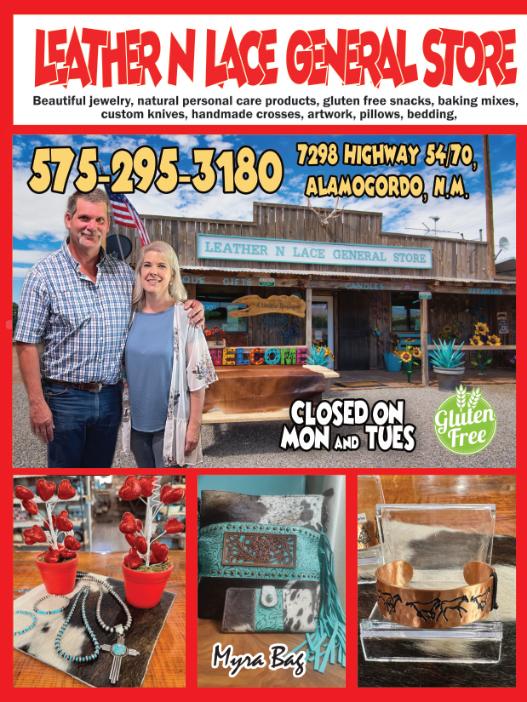


june 13th, 14th, 15th see ad page 16
Continued from page 29

footprints along the shore of an ancient lake called Paleolake Otero at White Sands. Those footprints were made as much as 23,000 years ago — the earliest known evidence of humans in NorthAmerica. Previously, the earliest signs of humans on this continent dated to about 16,000 years ago.
The dates for the White Sands footprints were confirmed through radio-carbon dating of seeds found embedded with the footprints, then later with two other methods for determining dates.
That puts the White Sands footprints near the peak of the last ice age. However, scientists have long believed it would have been impossible for humans to trek south from the iced-over Bering Strait at
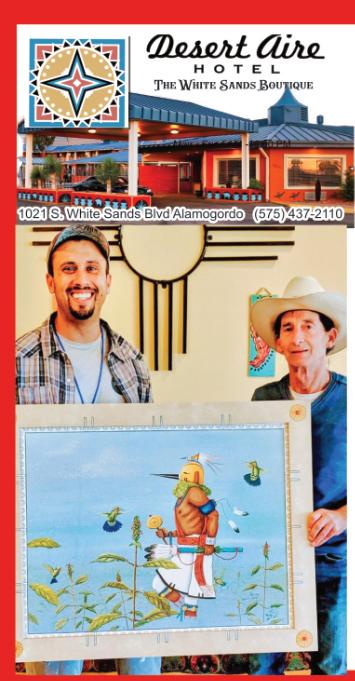


that time becase ice sheets then covering much of Canada made it impossible for them to go south. It was only after those ice sheets melted, beginning about 16,000 years ago, that humans began to trek south across North America, according to the onceprevailing theory.
The White Sands footprints mean people arrived in the American Southwest much earlier. Perhaps they arrived before the last ice age. Or they hiked south along the Pacific Coast in an area not covered by ice. One theory suggests they may have sailed across the Pacific Ocean from Russia or Japan, finding open oceans south of the massive ice fields.
Footprints laid down more recently at White Sands — roughly 15,500 years ago — indicate a human was stalking a giant ground sloth. Mammoths and giant wolves also inhabited the same ground at the time humans were there. In fact, one area where the travois tracks were found is colloquially known as the “mammoth trample ground” because of the Story continues Page 54
13th, 14th, 15th see ad page 16

Like I told my wife, after she had surprisingly escaped the merciless headlock I had on her, using a few illegal moves, following an argument that had quickly escalated into threats, and a full blown wrestling match!
All she had to do was holler “Uncle,” and I woulda let go, and celebrated with a moderate victory dance. But, no, she was stubborn like that, resorting to cheap maneuvers. (Hey, I had to try and defend myself)...... .but, like I informed her,
“For your information,” I told her, “biting during wrestling matches was outlawed, banned, several years ago during the Geneva Conventions if my memory is correct. Even the worst of the worst bad guys in the wrestling world never used their teeth,” I told her while massaging my bruised rib cage,


“In fact,” I further added, “I could legally, using WWF rules, have you ostracized from the community.” But, no remorse, no guilt, she just rolled her eyes at me, unashamedly.
Ahh, the old days, yep, that was back when we were young, full of life, agile, hot tempered, quick to rile, headlocks, scissorlocks, full Nelson’s, threats of divorce, cuts, abrasions, bruises, damaged egos.......
“You no good, lowdown, lily livered, lying, bleep of a bleeping skunk!”
Sadly, those exciting days are gone, not a lot of excitement or physical action in our disagreements nowadays, although I’m reasonably sure I could now take her in a two outta three match if her dog was outside and unable to help her. Even as a young kid, few ever broke outta my full Nelson hold.
I recall that wrestling hold once helped me win a rough wrestling match with a heavy set, tough, red headed fourth grader, one of the schoolyard bullies if my memory serves me correctly.
Yep, she was tough, but no match for my full Nelson hold, a popular wrestling hold used by wrestling greats like Gorgeous George, the Blue Cyclone, Cyclops, and of course, me, ”the Thurmanator.
“ Naturally, rules would have to be laid out, no biting, scratching, or pinching. But, I
Story continues next page
13th, 14th, 15th see ad page 16
Continued from previous page
doubt she’d get on board with those rules, she always was a bad sport.
The excitement of those “days of wine and roses,” our “wild side of life,” is gone now, after fifty some odd years, (a few weren’t so odd) but, after more than fifty years of marriage, a disagreement is now settled, while reposing comfortably in our recliners, a simple roll of the eyes, and the silent treatment is now the norm, along with a few well placed, biting sadistic, sarcastic remarks, guilt trips..... .....with a couple of “Oh yeahs,” thrown in….
“Hmm, guess our poor dog will freeze this winter since you haven’t built that doghouse!” Or,
“What, you’re not going to your granddaughter’s kindergarten graduation? What kind of grandpa are you?”
Well we made it thru it all, don’t get me wrong, we had our fun, in fact like I said, over fifty years. There were many good times, and, honestly, in all those years, I’ve never hit my wife. That’s something, ain’t it, yep, I missed her every time....ha...
Yes, we’ve had our ups and downs, ins and outs, the hard times, but we made it, here we are, watching our kids and grandkids go thru life, my what crazy things these kids do, shakin our heads, providing all the help we can, united....for a while anyway.....


june 13th, 14th, 15th see ad page 16



june 13th, 14th, 15th see ad page 16
On Monday afternoon, the mail arrived at Cordelia Lewis' house in Weed. She sorted through the tidy brown and white stack on her lap. There were two narrow rectangular boxes ("Candy," she said) and several letters.As usual, her mail was addressed simply to Cordelia Lewis, Weed, N. M. She and her neighbors have no addresses. Weed is too small.A number was recently attached to her fence so the volunteer firemen could find her house without any trouble. It probably wasn't necessary. Everybody in Weed knows who Cordelia Lewis is, and where to find her.
Lewis, who ran a thriving country business for 30 years in the heart of the Sacramento Mountains, will be 100 years old this Saturday.Age isn't much of an impediment to Cordelia Lewis. She looks 75 and acts 50. Sometimes she thinks 20. Right now she's reading the autobiography of automobile mogul Lee Iacocca. "He tells you how he made it. So many people make a fortune and they do all these durn things. But he's the only one who tells you how he made it." she said.
Although she seeks Iococca's advice, Cordelia Lewis is not someone who needs to be told how to get along in life. She's naturally independent. During her long life, she's moved west, traveled east and returned home to start her own business in a time when most women never dreamed of doing such things. Her accomplishments,


common today, turned heads in those days.
Lewis' roots in Weed are more than 100 years old. Her grandfather, George Washington Lewis, moved to Weed in 1884.
"He built a log house with just an ax." She said. That house still stands.
When she was young, her family moved to Crow Flats and ranched. "My daddy, he went broke, like all ranchers do." she said. Lewis' father went to Mexico to make another go of ranching, and she moved to El Paso to live with her grandparents. When she was a young woman, Lewis sold vegetables, working 60 hours a week for $12.
"I worked that way for three years and I saved $75." she recalls. She wrote to various Chambers of Commerce in the West and discovered that the employment laws were different in California. They would only work women 48 hours a week.And they paid you $16 a week." So she moved to LosAngeles.At night, she took classes.
By 1930, she had saved quite a bit of money. It was time to travel.
"I went to New York, Buffalo, Chicago and Washington D.C.," she said. What impressed her the most about her travels? In those days, everybody burned coal to stay warm. Lewis has vivid recollections of soot - soot in
Story continues page 50
13th, 14th, 15th see ad page 16
everyone's hair and clothes, soot-stained faces.
"I was glad to leave there... .what impressed me the most was to go back to California where everything was pretty." she said.
Times were good for Cordelia Lewis. Then the Depression arrived. Lewis moved to Oklahoma City and managed a beauty salon owned by her cousins. In 1942, the army built Tinker Field (now Tinker Air Force Base) and the populations swelled. Lewis sublet a room of her apartment, which added to her income.
Before the war ended, she moved back to Weed.
"I don't like cities. I like the country." she said.
Lewis worked a series of jobs before deciding to borrow $5,000 from her cousin to purchase Cash Grocery and Bar in 1947. It was a shrewd business decision. The enterprise flourished. She sold a variety of goods including men's underwear, spark plugs and canned goods.
"I worked myself to death," she said. "I got so durned tired. But it was worth it. I made a darned good livin'.
The bar section was a popular hangout.
"People used to say to me, "Don't you ever drink?" I said "God, no, I sell it. I don't drink it."
Lewis lived in a room in the back of the store.


In 1970, Lewis retired and sold her liquor license to the MescaleroApache Tribe. She converted the store into her home. She still lives there today. Lewis never married. "I never had time. I was too busy trying to make a livin'."
For many years after she sold the store she ranched.
Motel rooms in Cloudcroft are now starting to fill as old friends and family members arrive for Lewis' 100th birthday. She's looking forward to the next one.
"If I live for a few more years, I will have lived in three centuries," She said.
["Alamogordo Daily News" Feb 24 1999. Transcribed and Submitted by Elaine Watson]
AtAge 100, Cordelia Lewis Defies Law of Gravity
Cordelia Lewis' recent 100th birthday bash in Weed may have been the most pivotal Otero County event in years. At least 600 people attended, traveling from Colorado, Texas, Illinois and many other places to pay homage to Lewis, who danced at her birthday party on Feb. 27 at the Weed gym. The gym is not far from the log cabin where Lewis was born. She's lived in the Sacramento Mountains most of her life.
"There were so many people there I couldn't visit with all of them." Lewis later told the Daily News. "We had a good time."
Asynopsis of Lewis' life story was printed in the Feb. 24 edition of the Daily News. News
june 13th, 14th, 15th see ad page 16
of her birthday has spread nationwide. She's received congratulations and newspaper clippings from as far away as New York state.
"I haven't gotten through all my cards yet because I'm going through them one by one. I got over 100 of them." She said.
At the party, former Cloudcroft Mayor Mike Nivison sang a song about Lewis based on her infatuation with the Buick Roadmaster. (Best Cordelia Lewis story: "There's all those little stories about Cordelia." Nivison said. "Her family always drove Buick Roadmasters. They stopped making them about 1952." But a few years ago, "they" started making them again. Cordelia Lewis journeyed to "them" somewhere in southern New Mexico.
"Sonny, do you have any Buick Roadmasters?' She asked the young man, who probably had one hand in his pocket as he adjusted his mismatched tie. "Ma'am, I only got one," he said. "Well, I only need one. Bring it on up." She said. So he did.And she's been driving that Buick Roadmaster ever since.
"I've been behind her driving up that hill,' Nivison said " - Here you've got someone defying the law of gravity----She's not 100 years old. That's all there is to it.")
"Alamogordo Daily News" Feb 24 1999. Transcribed and Submitted by Elaine Watson] https://genealogytrails.com/


june 13th, 14th, 15th see ad page 16
Continued from page 41

large number of mammoth tracks there.
If these ancientAmericans killed or scavenged the carcasses of these huge animals, they would have needed a means to transport the meat, hides and other parts they collected. Carrying it all on their back would have been extremely difficult.
It is well-known that Native Americans on the Great Plains in more recent times used travois pulled by dogs, and later horses, to move tipis and to transport firewood or bullboats used on rivers and lakes.
“More commonly, large cuts of meat were transported on these vehicles after leaving a killing site,” the White Sands paper says. “The popularity of the travois on the Great Plains stems from its high functionality in landscapes with hard ground and short grass. Asimilar environment may have existed in our study area” based on climate analysis for the Southwest at the time the White Sands footprints were made.
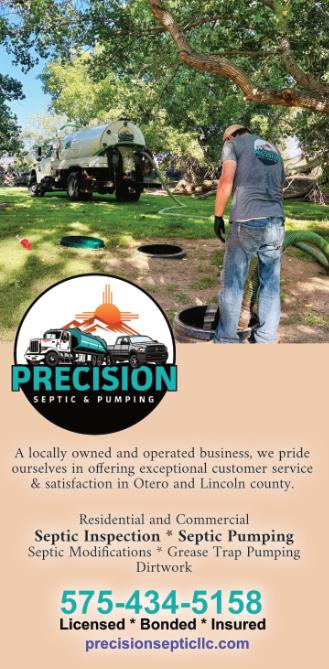

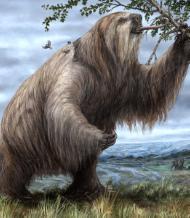
Although there is abundant evidence human beings who lived earlier than 23,000 years ago in other parts of the world, no one until now has seen indications that they used travois.
“So far as we are aware, this would be the earliest evidence for terrestrial transport technology, excluding, of course, watercraft,” said Edward Jolie, an anthropological archaeologist with the University ofArizona and a member of the White Sands research team.
That team didn’t just see ancient footprints with drag marks parallel to them, and assume that they indicated humans dragging travois. They considered a multitude of other possibilities such as mammoths dragging their trunks across soft sand or dragging logs as modern elephants are known to do; people dragging firewood; people dragging bullboats or small reed vessels to or from the lake; or flotsam washed ashore from Paleolake Otero. Story continues page 67 june 13th, 14th, 15th see ad page 16


june 13th, 14th, 15th see ad page 16


june 13th, 14th, 15th see ad page 16


june 13th, 14th, 15th see ad page 16
continued from page 57
JamesAnderson
Tularosa's First News Paper was Started in 1909
By Emily Lovell
One man who has probably done more to perpetuate the history of Tularosa than any other person is James E.Anderson who for slightly more than 20 years edited and published the "Tularosa Valley Tribune"
Pages of the newspaper tell the story of the village from 23 January 1909 toAugust 1929, when the paper was discontinued.
Anderson, a native of Indiana, came to New Mexico on a homesteader ticket which cost $25 round trip from Chicago to Alamogordo.He was in the newspaper business there, too, and his brother-in-law, the late DanielA. Fribley, induced him to come out to New Mexico. He was 24 years old. Fribley had been chosen family "scout". He was to come to Oscura where a family friend, a Mr. Rafferty wanted to put a dam across Bull Gap and irrigate the desert. Rafferty wanted support for his scheme.
Anderson and Fribley arrived at Oscura on 17April 1907. The next morning they went out to look over the proposed project. Fribley took his gun along and had so much fun hunting jackrabbits that he decided he would go toAlamogordo to look for a job. Neither of the young men approved of investing in Rafferty's dam. To occupy himself while Fribley was in Alamogordo,Anderson got a job building a livery stable for a man named Furry. One windy day, Anderson was asked to take


some scaffolding down. He went out to hit the stub with his hammer and did not remember another thing until he awoke in Alamogordo the next morning. The malpais and concrete wall had blown down on him breaking his back. Two vertebrae were broken, his ankle crushed, and he also received head and chest injuries. The morning of 1 May, 1907,Anderson was taken into Alamogordo on a stretcher. He had been put on the night train. Father Mijon, who was the priest at St. Francis church at the time, had been visiting at Three Rivers with the lateA. B. Fall and was returning to Tularosa. He was told of the injured man and went up to the baggage car to ride with the unconsciousAnderson.Mrs. Maude Fribley,Anderson's sister, came to be with her husband and brother.
The move to Tularosa was made byAnderson on 31 December 1908.After his recuperation, he had been working inAlamogordo for J. P.Annan as a typesetter for $10 a week onAnnan's newspaper.Annan was building a sanitarium at the entrance to Alamo Canyon. It later burned.
H. M. Kellogg, then deputy county clerk, loanedAnderson $200 which he used to begin the Tribune. He bought new equipment from Barnhart Brothers for $2200.
After leaving the newspaper game,Anderson served as justice of the peace for nine years, was mayor of Tularosa and filled terms as county commissioner when the present courthouse was built in 1955-56 and previously, in 1951-52.
He has been writing insurance since 1920. He received his first notary public commission on 22 December 1909–a commission he has held continuously and which is in force until 1961. june 13th, 14th, 15th see ad page 16

Dyslexia (from the Greek dys: not working well, and lexia: words) is a specific learning disability, neurobiological in origin, i.e., a “different” brain that handles many tasks excellently but does not connect well with reading and written language.”
Dyslexics may have problems with reading, spelling and/or mathematics.
Characteristics that may accompany dyslexia include difficulty with: isolating and identifying sounds in words, syllables and rhymes; word identification and trouble comprehending what is read; spelling, especially remembering the order of letters; handwriting, including reversal of letters and a lack of clarity about right- or left han-



dedness; math related to the order of numbers, the sequence of steps in a problem or the language of mathematics and directionality; putting thoughts into words, both written and spoken; delays in learning to speak and in using age-appropriate language; and confusion of directions in space or time, including right/left, up/down and yesterday/tomorrow).
An estimated 10-20 percent of the U.S. population is dyslexic. It tends to run in families.
People with dyslexia have average, above average or gifted intelligence.Astudent who is bright but may not be performing well academically and is considered lazy or lacking in motivation may be dyslexic.
Dyslexia therapy is a different way of teaching. it integrates all the senses in learning, bypassing blocked neural passageways and forging new connections in the brain. Dyslexic individuals usually cannot immediately remember whole words, so they must know the structure of the English language and its component parts (phonetics). Therapy completely changes the individual’s relationship with written language.
It takes at least two years to complete dyslexia therapy and requires a substantial commitment on the part of the individual and his or her parents.
continued from previous page
Dyslexia therapy is important because 80 percent of students who do not read well by the end of the third grade will not finish high school. Illiteracy is a huge predictor of poverty, homelessness and prison incarceration.
Among students who begin therapy before the fourth grade, almost all will learn to read and 80 percent will learn to read well. Therapy will help at any age, but it is not as fast or as effective the later it is started.
Dyslexia Institute of Southern New Mexico seeks to impart the gift of literacy to bright children and adults who learn differently and have significant difficulty with symbolic tasks: reading, math, and written language.
Utilizing highly structured, sequential, individualized therapy, we strive for mastery of basic skills. However, our goals do not stop with academics.
Over the years, our students develop confidence. Self-esteem soars as success comes within their reach. Thus, our ultimate goal is to partner with families to develop literate adults, ready to take their places as responsible and productive citizens.
Dyslexia Institute Of Southern New Mexico, Inc.1320 S Solano, Las Cruces (575) 650-6820


Continued from page 55
However, with the exception of people dragging firewood in a couple of instances, none of the possibilities listed above could have left the types of tracks so closely aligned with human footprints that the researchers discovered.
The scientists found three different types of drag marks. There were marks left by a v-shaped conveyance with single pole dragging; similar single-pole marks where the end of the pole appears to have been covered by a piece of hide to make it easier to drag; and parallel marks believed to have been made by two poles connected in an x-shaped formation.
To test their theories, some of the researchers also made their own travois and pulled them across a tidal mudflat in the United Kingdom. They left marks very similar to those found buried at White Sands.
They also learned that such a mechanism was a useful method of hauling heavy items. “Ahandpulled travois functions well and is equivalent to using a small wheelbarrow or cart, and there is a clear advantage in moving bulky, and presumably heavy, items,” the paper said.
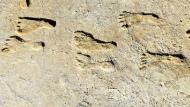
13th, 14th, 15th see ad page 16

After the conclusion of World War II, 100 long-range German V-2 rockets that were captured by U.S. military troops were brought to White Sand Proving Ground. Of these, 67 were test-fired between 1946 and 1951 from the White Sands V-2 Launching Site. (This was followed by the testing of American rockets, which continues to this day, along with testing other technologies.)
Alaunch complex, now known as Launch Complex 33, was built in the desert sand dunes six miles east of the post. It featured a concrete blockhouse with 10-foot-thick walls and a 27- foot-thick roof. AWAC Corporal launch tower was also erected.Ayear later, a gantry was added.


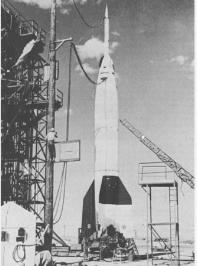
The first rockets crafted by Americans to blast off from the launch complex, the nation’s first large-scale launch facility, were WAC Corporals. Built by the fledging Jet Propulsion Laboratory, the 16-foot, 660pound rockets were designed to carry a 25-pound weather package to an altitude of 20 miles. Since the WAC Corporal was under-powered, JPL engineers used a solid-fueled rocket booster dubbed “Tiny Tim” to get the rocket out of its launch tower and up to speed. The booster generated 50,000 pounds of thrust for a half second. By the time, the WAC Corporal was out of the 100-foot tower it was going almost 275 mph. During a series of tests in 1945 and 1946, the WAC Corporal was phenomenally successful, ultimately attaining an altitude of 43 miles. However, there were incidents. Documents in the New Mexico Museum of Space History archives detail the classified project, and how the military also sent 300 railroad
13th, 14th, 15th see ad page 16
continued from previous page
boxcars crammed with V-2 parts into southern New Mexico and as the Germans began building the United StatesArmy's rocket program many early launches either blew up on the pad or crashed on base.
After multiple successful tests one with over 100 Newspaper reporters present and news around the world floating of US gaining in rocket research a series of crashes occurred. The first crashed May 15, 1947 in the city ofAlamogordo. The crash occurred on the site of what is now New Mexico State University and the Space Hall of Fame.
After the May 15 disaster, the May 22Alamogordo News reported "the people ofAlamogordo got a thrill and incipiently a scare as some sort of body flew over the town in erratic flight and exploded at least once before dropping to earth."
The launch took place at 4:08 p.m. from Launch Complex 33. The liquid fuel was programmed to burn for 63.6 seconds and thrust the 9,827-pound rocket to 3,202 mph, attaining 76 miles in altitude.
However, technicians noted "steering was a trouble from liftoff," with the V-2 " tumbling end over end through the atmosphere. The pressure broke the missile apart." Pieces fell near 13th Street and CubaAvenue, and along the Southern Pacific Railroad tracks.
TheAlamogordo News reported residents "got into cars and hastened to the vicinity" of the crash above Indian Wells Road, about 35 miles from LC 33.


Citizens also "guarded a portion of the apparatus the rocket was carrying" that had plummeted down to First Street.
Bob Callaway, a high school freshman in 1947, said in a 1995 NMMSH oral history that he and a friend were tossing a ball at MichiganAvenue and 15th Street when the power lines "started shaking violently.About that time, we got the sound wave from the explosion of the V-2."
Callaway and four friends rushed to the scene in a truck and watched personnel load wreckage onto a trailer. He said security permitted them to take nonhazardous material, and they carted off a "bonanza" of wiring and steel tanks. They used the wires to build model airplanes, and the tanks to make "portable welding units," he said.
Callaway knew of one person who found cameras. That night "OSI started knocking on doors, and believe it or not, by midnight had recovered all five cameras," Callaway said.
Story courtesy of Chris Edwards Alamogordo Town News
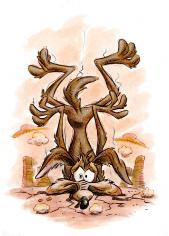
13th, 14th, 15th see ad page 16

Bolognese is a traditional Italian meat-based sauce that origina-ted in the city of Bologna in Italy.
It's typically made with beef, or a mix of beef and pork, along with aromatics, red wine, milk, broth, herbs and seasonings, and served over thick, flat noodles, like tagliatelle, fettuccine, or pappardelle.
It's known for its deep, savory flavor, and served as a classic comfort food.
This mushroom version is a vegetarian twist on the classic that's every bit as delicious as the original.


Making bolognese is a great way to transform simple ingredients into a robust, flavorful sauce, perfect for coating tagliatelle, pappardelle, fettuccine, or other types of flat noodles.
This sauce can be made in advance to serve later in the week. Cook the sauce and store in an airtight container in the refrigerator for up to three days, or freeze for up to three months. Thaw overnight in the refrigerator if frozen.
Cook the pasta as directed, and reheat the bolognese on the stovetop, adding pasta water as needed to adjust the consistency. Toss in the pasta and serve with shaved Parmesan and fresh basil.
Mushroom bolognese is a hearty, flavorful dish that pairs well with a variety of sides, including garlic bread or crusty Italian bread to soak up every bit of the delicious sauce. Roasted vegetables can add a nice balance with their caramelized sweetness, while sautéed spinach or kale can add a nice boost of nutrients to the meal.
• 4 (6-oz.) pkg. fresh portobello mushrooms, stems and gills removed, cut into 1/2-inch pieces
• 3 Tbsp. olive oil, divided
• 1 large yellow onion, finely chopped (about 2 cups)
• 1 large carrot, peeled and finely chopped (about 1 cup)
• 1 large celery stalk, finely chopped (about 1/2 cup) june 13th, 14th, 15th see ad page 16
Continueed from previous page
• 2 tsp. finely chopped garlic (from 2 garlic cloves)
• 2 Tbsp. tomato paste
• 1 cup dry white wine
• 1 cup whole milk
• 2 cups Mushroom Stock
• 1 (14 1/2-oz.) can crushed tomatoes
• 2 oz. Parmesan cheese, finely grated (about 1/2 cup)
• 2 1/4 tsp. kosher salt, plus more for salting water
• 1/2 tsp. black pepper
• 12 oz. uncooked tagliatelle, pappardelle, fettuccine, or linguine pasta
• Shaved Parmesan cheese
• Fresh basil leaves
Directions
Preheat oven to broil with rack about 6 inches from heat source. Line a large rimmed baking sheet with aluminum foil.
Toss mushrooms and 2 tablespoons of the olive oil in a medium bowl to combine; arrange in an even layer on prepared baking sheet.
Broil mushrooms until tender and very lightly charred, 10 to 12 minutes. Set aside.
Meanwhile, heat remaining 1 tablespoon oil in a large saucepan over medium until shimmering.
Add onion, carrot, and celery; cook, stirring occasionally, until tender, 5 to 7 minutes.


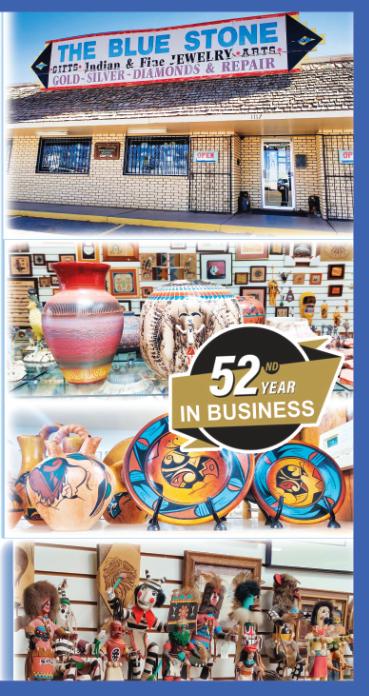
Add garlic, and cook, stirring constantly, until fragrant, about 1 minute.
Add tomato paste, and cook, stirring constantly, until fragrant, 2 to 3 minutes.
Add wine, and cook until liquid is almost completely reduced, 5 to 6 minutes.
Add milk, stock, tomatoes, and broiled mushrooms to saucepan; bring to a boil over medium-high.
Reduce heat to medium-low; simmer, stirring occasionally, until mixture thickens, 55 to 60 minutes.
Remove from heat, and stir in grated Parmesan, salt, and pepper. Cover to keep warm until ready to serve.
Bring a large pot of salted water to a boil over high.Add pasta; cook according to package directions. Drain pasta, reserving 1 cup cooking water.
Add cooked pasta to Portobello Bolognese along with 1/2 cup reserved cooking water, and stir gently to combine.Add more cooking water to reach desired consistency, if needed. Divide pasta among 4 bowls. Garnish with shaved Parmesan and fresh basil leaves, and serve immediately.
While portobello mushrooms are used for this recipe, you can also use cremini, shiitake, or a mix of mushroom types if preferred.
13th, 14th, 15th see ad page 16


june 13th, 14th, 15th see ad page 16

Adelicious (?) Pie crust filled with fried bologna, potatoes, onion, carrots, garlic, and peas.
Ingredients
• 1 recipe double crust pie crust made the day before and rested in fridge
• 2 tbsp oil
• 1 lb thick sliced bologna fried until slightly browned
• 1 onion thin sliced
• 2 large russet potatoes peeled, halved and sliced thin
• 2 carrots peeled and thin sliced
• 2 cloves garlic minced
• 1 cup frozen peas
• 1/4 cup water
• salt and pepper
• 1 egg for egg wash
• ketchup for serving


13th, 14th, 15th see
Instructions
• Heat oven to 425 and place rack in the middle.
• Roll out the bottom crust and put into your pie plate and put back into the fridge to chill while you make the filling.Also roll out the top circle and place back in the fridge on a sheet pan so it is ready to go.
• In a skillet, heat 1 tbsp oil until hot.Add the onion and cook for 2-3 minutes.Add the potatoes, carrots, and garlic and cook, stirring occasionally for about 8 minutes until they are browning. Add the water and cover and cook until the potatoes are just tender.About 10-15 minutes. Stir in the peas and season with salt and pepper. Taste and adjust seasoning if needed.Allow to cool for 30 min.
• Fry the bologna slices and allow to cool for 30 min as well.
• Spoon the vegetables into the chilled pie crust and spread evenly. Top with the bologna. Cover with top crust and crimp as desired. Whisk egg with 1 tbsp water and brush crust with egg wash.
• Bake until top and bottom crust are nice and brown and crisp. About 40-50 minutes. Cover the edges with foil if they are getting too browned. Let rest for 10 minutes, then cut and serve with ketchup. Yum!
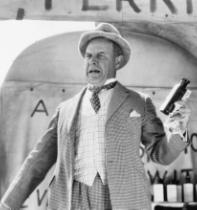
In the rugged days of the Wild West, where tumbleweeds danced across dusty streets and six-shooters were as common as cowboy hats, healthcare was a perilous affair.
The pioneers faced not only the threat of outlaws but also an insidious adversary: disease. Epidemics of malaria swept through frontier settlements while cholera, typhoid, and scurvy plagued the gold camps of California and the Southwest.
Against these perils, pioneers turned to folk remedies and patent medicines, believing that strong-smelling, vile-tasting concoctions held the key to health.
Picture the typical frontier doctor: a lone rider with saddlebags containing homemade bandages, a mortar and pestle for mixing prescriptions, and a small assortment of knives and saws. These physicians were long on courage and endurance but short


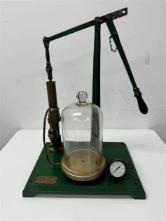
on supplies. By 1840, the more progressive among them had added tooth forceps, stethoscopes, and obstetrical instruments to their meager arsenals. Some even used a fraudulent device called a pulsometer, which bubbled colored liquid during pulsetaking, giving patients a false sense of cutting-edge science.
But what about the quacks? Those charlatans peddling potions promising miraculous cures?
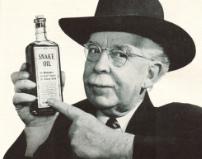
Operating out of Phoenix, Arizona in the late 19th century, one such quack, Dr. John Heber McGaughy, made a name for himself as a purveyor of mesme-
13th, 14th, 15th see ad page 16
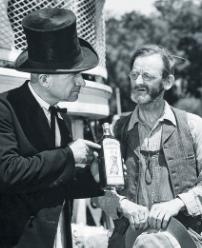
rizing cures and magnetic devices. McGaughy claimed that by har-nessing the power of magnetism, he could cure various ailments, from arthritis to impotence.
His most famous device, the “Electromagnetic Vitalizer,” was a belt embedded with magnets that he claimed could restore vitality and health.
McGaughy’s methods were not without their skeptics. Local newspapers often published scathing critiques, warning the public about the dubious nature of his treatments. However, the allure of quick and miraculous cures kept his business thriving. His traveling medicine shows drew large crowds, eager to witness his magnetic healing demonstrations and purchase his elixirs, which promised everything from increased energy to relief from chronic pain.



In the absence of trained physicians and reliable medical supplies, pioneers often turned to folk remedies and traditional healing practices. Native American tribes of the Southwest contributed significantly to the pioneers’medical knowledge, sharing their extensive understanding of local plants and their medicinal properties. These remedies included sarsaparilla, prickly pear cactus, and yarrow to name a few
Women played a crucial role in providing medical care on the frontier. Often, they were the first and only line of defense against illness and injury within their families and communities.Armed with knowledge passed down through generations and a few precious medical texts, these frontier women administered herbal remedies, set broken bones, and even performed minor surgeries.
Midwifery was another vital aspect of frontier medicine. With trained doctors often miles away, midwives ensured the safe delivery of babies and provided postpartum care to new mothers. Their expertise and dedication were invaluable in an era when childbirth carried significant risks.
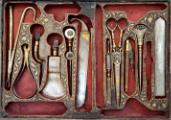
13th, 14th, 15th see ad page 16


june 13th, 14th, 15th see ad page 16


june 13th, 14th, 15th see ad page 16
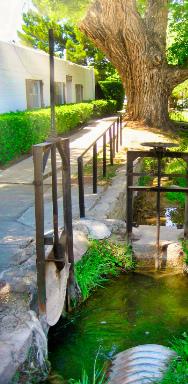


nichols’ ranch 7th annual cherry festival

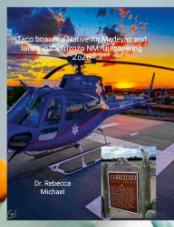
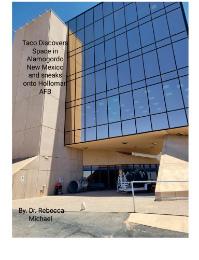

june 13th, 14th, 15th see ad page 16


June 14, 15, 16 For information See their ad this edition page 10
june 13th, 14th, 15th see ad page 16


june 13th, 14th, 15th see ad page 16




William Henry Mauldin ( Oct. 29, 1921 – Jan. 22, 2003) was anAmerican editorial cartoonist who won two Pulitzer Prizes for his work. He was most famous for his World War II cartoons depicting American soldiers, as represented by the archetypal characters Willie and Joe, two weary and bedraggled infantry troopers who stoically endure the difficulties and dangers of duty in the field.
Mauldin was born in Mountain Park, New Mexico, into a family with a tradition of military service. His father served as an artilleryman in World War I. Bill's grandfather had been a civilian scout in theApache Wars
Bill and his older brother Sidney moved to Phoenix, Arizona in 1937 and attended Phoenix Union High School. It was there that he began his career in editorial journalism— writing for PUHS's Coyote
Continued on page 100
13th, 14th, 15th see ad page 16


june 13th, 14th, 15th see ad page 16
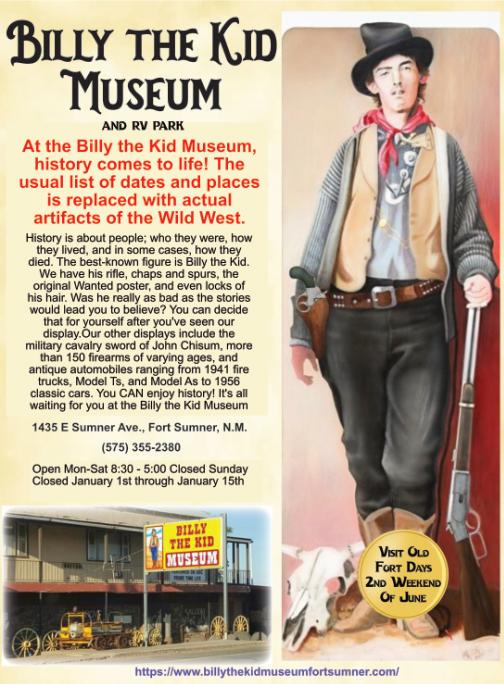
WEATHER PERMITTING

FRIDAY / SATURDAY 10AM to 4PM

june 13th, 14th, 15th see ad page 16
continued from page 95
Returning to Phoenix in 1940, Mauldin enlisted in Company D, 120th Quartermaster Regiment, of the Arizona National Guard, at Phoenix, Arizona. His division, the 45th Infantry Division, was federalized just two days later.
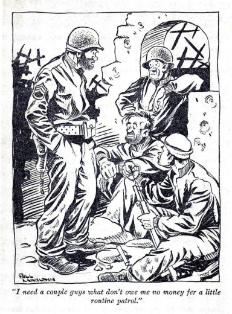
While in the 45th, Mauldin volunteered to work for the unit's newspaper, drawing cartoons about regular soldiers or "dogfaces". Eventually he created two cartoon infantrymen, Willie and Joe, who represented the averageAmerican GI.
During July 1943, Mauldin's cartoon work continued when, as a sergeant of the 45th Infantry Division's press corps, he landed with the division in the invasion of Sicily and later in the Italian campaign.
Mauldin began working for Stars and Stripes, theAmerican soldiers' newspaper; as well as the 45th Division News, until he was officially


transferred to the Stars and Stripes in February 1944.
Egbert White, editor of the Stars and Stripes, encouraged Mauldin to syndicate his cartoons and helped him find an agent. By March 1944, he was given his own jeep, in which he roamed the front, collecting material.
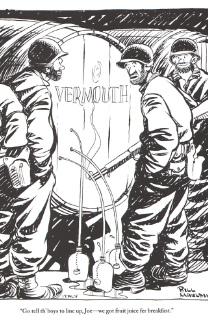
He published six cartoons a week. His cartoons were viewed by soldiers throughout Europe during World War II, and were also published in the United States. The War Office supported their syndication, not only because they helped publicize the ground forces but also to show the grim side of war, which helped show that victory would not be easy
Mauldin was not without his detractors. His images—which often parodied theArmy's spit-
Continues page 103
13th, 14th, 15th see ad page 16
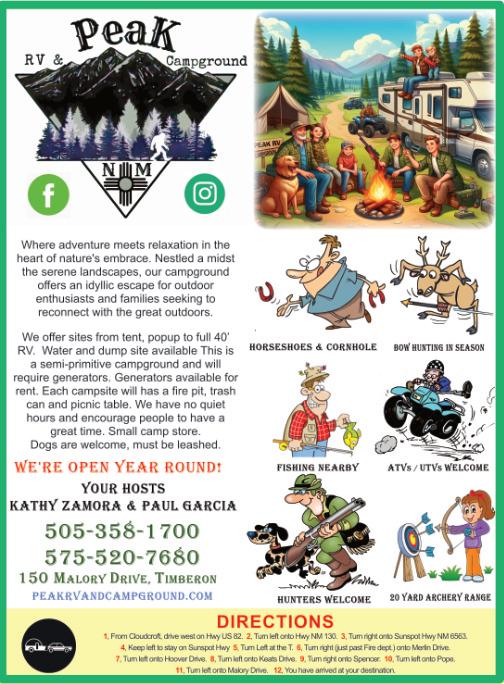

13th, 14th, 15th see
Continued from page 101 shine and obedience-to-orderswithout-question policy— offended some officers.After a Mauldin cartoon ridiculed Third Army commander General George Patton's decree that all soldiers be clean-shaven at all times—even in combat—Patton called Mauldin an "unpatriotic anarchist" and threatened to "throw [his] ass in jail" and ban Stars and Stripes from his
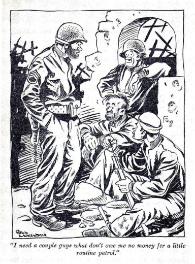
command. General Dwight Eisenhower, Patton's superior, told Patton to leave Mauldin alone; he felt the cartoons gave the soldiers an outlet for their frustrations. "Stars and Stripes is the soldiers' paper," he told him, "and we won't interfere."
Mauldin's cartoons made him a hero to the common soldier. GIs often credited him with helping them to get through the rigors of the war. His credibility Continues next page
Continued from previous page
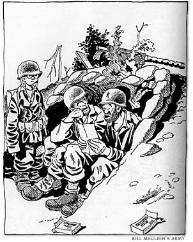
with the troops increased in September 1943, when he was wounded in the shoulder by a German mortar while visiting a machine gun crew near Monte Cassino.
In 1945, at the age of 23, Mauldin won a Pulitzer Prize for his wartime body of work, exemplified by a cartoon depicting exhausted infantrymen slogging through the rain
After the war, Mauldin turned to drawing political cartoons expressing a generally civil libertarian view associated with groups such as theAmerican Civil Liberties Union. These were not well received by newspaper editors, who were hoping for apolitical cartoons.
In addition to cartooning, Mauldin worked as a freelance writer. He also illustrated many articles for Life magazine, The Saturday Evening


Post, Sports Illustrated, and other publications.
Mauldin died on January 22, 2003, fromAlzheimer's disease and complications of injuries received in an accidental bathtub scalding. He was buried inArlington National Cemetery
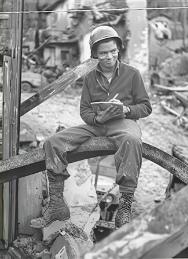

june 13th, 14th, 15th see ad page 16

Liz is a staff member working at the Sunspot Visitor Center and gift shop.
Though she works as Lead Cashier, her contribution to the Visitor Center far exceeds that. She has been here since 2018 and has been working at Sunspot the second-longest as her fellow coworkers. She works at the register, greets tourists, manages the inventory and leads tours to the Dunn Solar Telescope.
Liz is originally from Tucson, AZ and loves the coolness of Cloudcroft, where she now resides. She loves spending time with her now grown-up grandkids and plans to adopt two kittens from a shelter soon.
Liz is an enthusiastic peopleperson, and her favorite part of the job is to get to know people who visit the center from different parts of the country and from far beyond of its borders.
She loves the nature surrounding her at the Observatory and considers it an amazing work-


https://sunspot.nmsu.edu



Locatedatanaltitudeof9200ft(2800m)inthe scenicLincolnNationalForest,SunspotSolar Observatoryishometogorgeousvistas, historicallandmarks,andoneofthelargestactive solartelescopesintheworld.Visitorscanexplore ourinteractiveastronomymuseum,walknature trails,andenjoylunchatourpicnictables

SunspotSolar Observatory providesinstitutions withaccesstooneof theworld'sleading solarfacilities, servingasatraining groundforthenext generationofsolar researchers,andto ultimatelyenhance ourunderstandingof theSun




place because of the location and the people she works with.
When asked why she would recommend a visit to Sunspot to a stranger, she says, “You wouldn’t want to miss an opportunity to visit Sunspot, because it is one of the most unique places of interest in our location that offers education and enlightening information on solar astronomy.”
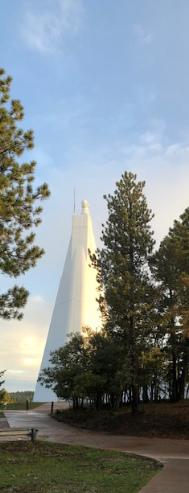
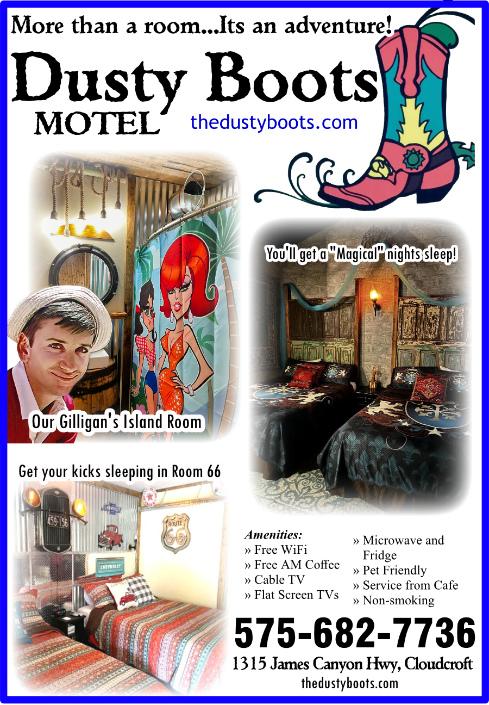

june 13th, 14th, 15th see ad page 16

High Rolls Mountain Park is in Otero County. Its elevation is 6710 feet. Mexicans who settled in the Tularosa Basin in the mid-1880s obtained water rights to graze cattle in the fertile canyons of the Sacramento Mountains.
By the 1880s, homesteaders discovered the area, bought the water rights and began establishing farms.
David M. Sutherland located in the High Rolls area in 1883 and was soon followed by Francisco Maes and Cipriano Tefoya, who came up from La Luz in 1884 and settled in the Mountain Park area.
P.M. “Uncle Button” Nelson, Jack Tucker and William Karr married sisters and moved into the region in 1885. Other early settlers included I.Q. Snow, Hamilton Kimberlin, Michael Mulchay, George Van Sickle, Eugene Sullivan, Fletcher and James Thompson, J.M. Bennett, Venturo

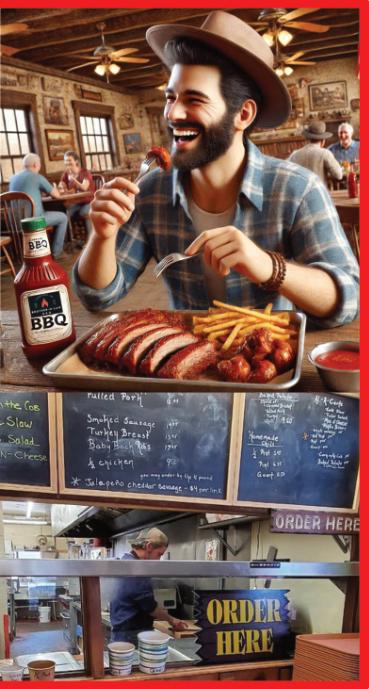

Giron, George Wofford, Charlie McClure,Antonio Vargas and Ben Wooten.
They built and maintained ditches to divert the Fresnal water to their crops and built the first dirt road from Fresnal to La Luz. Fresnal, later known as Wooten, had the first post office in the area, established in 1894.
The coming of the railroad in 1898 opened up the area for the shipment of goods to market and development of the tourist trade.
By 1899, trains went as far as Toboggan Canyon, where passengers were transferred to

13th, 14th, 15th see ad page 16
stagecoaches for the final miles to Cloudcroft. Freight depots and Wells Fargo offices were built in both High Rolls and Mountain Park. The railroad operated on a regular basis until World War II. It finally ceased operation in 1948.
The first official use of the High Rolls name was in 1901, when the post office was moved from Fresnal (Wooten) to High Rolls. The name, which was sometimes spelled as one word, Highrolls, supposedly came from the shape and elevation of the area as compared to the sharper peaks higher up.
Mountain Park received its name from Edgar Cadwallader, who came there in 1903 with the intent to grow fruit and vegetables. Others settled in the area and the resulting orchards produced apples, cherries, peaches, pears, cauliflower, and cabbage. It became so successful that the post office was moved there from High Rolls in 1904.
Other activities in the High Rolls/Mountain Park area included a poultry farm, a sawmill, a blacksmith shop and a shingle mill run by water from the Fresnal. The Courtney Mine shipped copper ore from its location 4 miles south of High Rolls.
The first store was the High Rolls Mercantile Store, built in 1905, it is still standing on
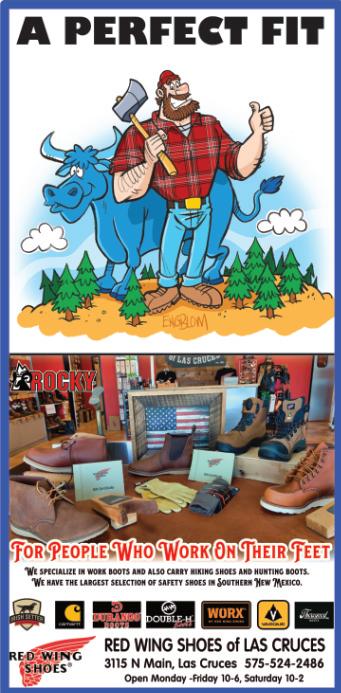

Railroad Drive in High Rolls. The original area school was a log cabin built in 1889.Aschool in Haynes Canyon was built in 1908 and the rock school in Karr Canyon was built in 1922 using some of the lumber from the old Haynes Canyon school. Although designed for indoor plumbing none was installed until 1944, because some school board members believed it was unnecessary.
The first church building was constructed of logs in 1888. In 1906, the Fresnal Baptist Church was built in Haynes Canyon. It is the present High Rolls/Mountain Park United Methodist Church, now a state historical site.
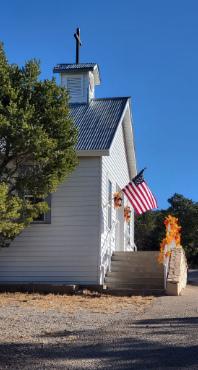
13th, 14th, 15th see ad page 16
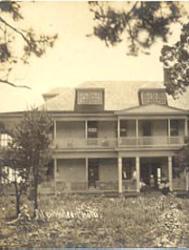
The High Rolls Development Company was formed in 1909 and built a three-story hotel with 25 rooms, which opened in 1912. The company also constructed about 50 guest cottages for summer visitors.
Over the years, the hotel served as a tuberculosis sanitarium and later as a retreat for Jesuit priests. Finally, the hotel was dismantled, with part staying and becoming a private residence while other parts became homes inAlamogordo.
Of the 50 cottages, only about six remain, all remodeled and added to, on what was known as Cottage Row. The 160 acre Skyline Ranch of the YMCA was a well-known feature of the region from its start in 1908 as Camp Mescalero until it was sold and became private property in the 1980s.
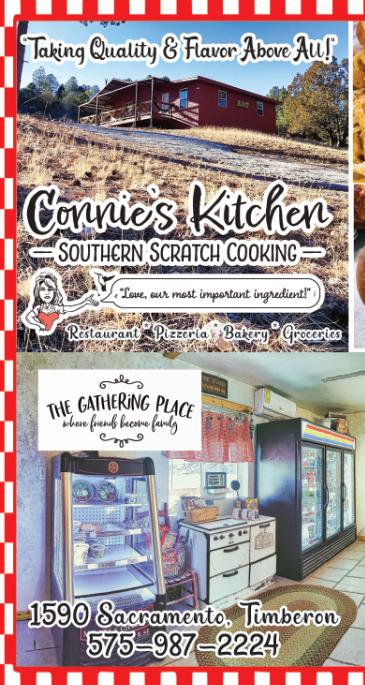


On Monday afternoon, the mail arrived at Cordelia Lewis' house in Weed. She sorted through the tidy brown and white stack on her lap. As usual, her mail was addressed simply to Cordelia Lewis, Weed, N. M. She and her neighbors have no addresses. Weed is too small.Everybody in Weed knows who Cordelia Lewis is, and where to find her.
Lewis, who ran a thriving country business for 30 years in the heart of the Sacramento Mountains, will be 100 years old this Saturday.Age isn't much of an impediment to Cordelia Lewis. She looks 75 and acts 50. Sometimes she thinks 20. Right now she's reading the autobiography of automobile mogul Lee Iacocca. "He tells you how he made it. So many people make a fortune and they do all these durn things. But he's the only one who tells you how he made it." she said.
Although she seeks Iococca's advice, Cordelia Lewis is not someone who needs to be told
Story continues page 117


13th, 14th, 15th see ad page
Continued from page 115 how to get along in life. She's naturally independent. During her long life, she's moved west, traveled east and returned home to start her own business in a time when most women never dreamed of doing such things. Her accomplishments, common today, turned heads in those days.
Lewis' roots in Weed are more than 100 years old. Her grandfather, George Washington Lewis, moved to Weed in 1884.
"He built a log house with just an ax." She said. That house still stands.
When she was young, her family moved to Crow Flats and ranched. "My daddy, he went broke, like all ranchers do." she said. Lewis' father went to Mexico to make another go of ranching, and she moved to El Paso to live with her grandparents. When she was a young woman, Lewis sold vegetables, working 60 hours a week for $12.
"I worked that way for three years and I saved $75." she recalls. She wrote to various Chambers of Commerce in the West and discovered that the employment laws were different in California. They would only work women 48 hours a week.And they paid you $16 a week." So she moved to LosAngeles.At night, she took classes.
By 1930, she had saved quite a bit of money. It was time to travel.
"I went to New York, Buffalo, Chicago and Washington D.C.," she said.
Story continues next page
continued from previous page
What impressed her the most about her travels? In those days, everybody burned coal to stay warm. Lewis has vivid recollections of soot - soot in everyone's hair and clothes, sootstained faces.
"I was glad to leave there....what impressed me the most was to go back to California where everything was pretty." she said.
Times were good for Cordelia Lewis. Then the Depression arrived. Lewis moved to Oklahoma City and managed a beauty salon owned by her cousins. In 1942, the army built TinkerAir Force Base and the populations swelled. Lewis sublet a room of her apartment, which added to her income.
Before the war ended, she moved back to Weed. "I don't like cities. I like the country." she said.
Lewis worked a series of jobs before deciding to borrow $5,000 from her cousin to purchase Cash Grocery and Bar in 1947. It was a shrewd business decision. The enterprise flourished. She sold a variety of goods including men's underwear, spark plugs and canned goods.
"I worked myself to death," she said. "I got so durned tired. But it was worth it. I made a darned good livin'” The bar section was a popular hangout.
"People used to say to me, "Don't you ever drink?" I said "God, no, I sell it. I don't drink it."
Lewis lived in a room in the back of the store.
In 1970, Lewis retired and sold her liquor license to the Mescalero Apache Tribe. She converted the store into her home. She still lives there today. Lewis never married. "I never had time. I was too busy trying to make a livin'."


june 13th, 14th, 15th see ad page 16

Prickly pear cactus — or also known as nopal, opuntia and other names — is promoted for treating diabetes, high cholesterol, obesity and hangovers. It's also touted for its antiviral and antiinflammatory properties.
Some preliminary evidence shows that prickly pear cactus can decrease blood sugar levels in people with type 2 diabetes.
Some research also suggests that prickly pear cactus extract may lessen the unpleasant effects of a hangover, possibly due to its anti-inflammatory effects.
It might be too early to call prickly pear cactus a superfood, but it can be part of a healthy diet. It's high in fiber,
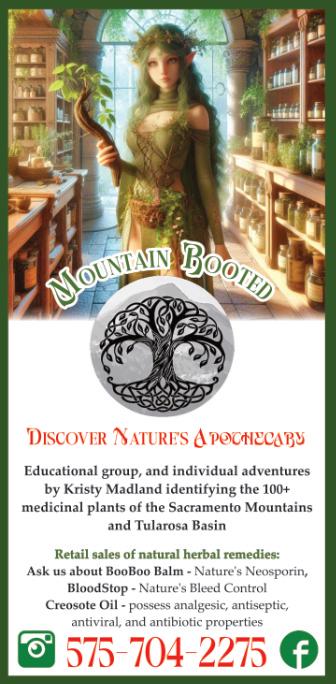

antioxidants and carotenoids. Indeed, prickly pear cactus is popular in many areas of the world, particularly Latin America, where it is a native plant.
The edible parts are the leaves, flowers, stems and fruit. Prickly pear cactus is eaten whole (boiled or grilled). It is also made into juice and jams.
If you'd like to try prickly pear cactus, consider easing into it. Side effects for some people include mild diarrhea, nausea, increased stool volume, increased stool frequency and abdominal fullness.
www.mayoclinic.org/healthy-lifestyle

Ingredients
8 prickly pears
3 tablespoons freshly squeezed lemon juice
2 ½ tablespoons powdered fruit pectin
1 teaspoon powdered fruit pectin
2 ½ cups white sugar
1 ½ teaspoons amaretto liqueur
story Continues Next Page
13th, 14th, 15th see ad page 16
Inspect a 1-quart jar and 1-pint jar for cracks and rings for rust, discarding any that are defective. Immerse jars in simmering water until jam is ready. Wash new, unused lids and rings in warm soapy water.
Wear protective gloves to rub and rinse prickly pears under running water to make sure all spines are removed. Cut each pear in half; scoop pulp and seeds and place in the bowl of a food processor. Pulse for 30 to 40 seconds. Transfer mixture to a strainer lined with cheesecloth set over a bowl. Gather cheesecloth into a pouch and squeeze out juice. Remove any remaining pulp from seeds and add to the bowl with juice.
Combine prickly pear juice, pectin, and lemon juice in a saucepan over medium heat. Bring to a rolling boil that can't be stirred down.Add sugar and amaretto; stir until completely dissolved. Return mixture to a rolling boil, constantly stirring. Cook until jam is reduced by half, 5 to 7 minutes.
Remove jam from heat. Skim off and discard any froth that may have formed. Dip a metal spoon into jam to test for desired thickness.Add another 1/2 teaspoon of pectin and boil for 1 minute more if you desire a thicker jam.
Pack jam into hot, sterilized jars, filling to within 1/4 inch of the top. Run a clean knife or thin spatula around the insides of the jars to remove any air bubbles. Wipe rims with a moist paper towel to remove any spills. Top with lids and screw rings on tightly.
Remove jars from the stockpot and let rest, several inches apart, for 12 to 24 hours. Press the center of each lid with a finger to ensure the lid does not move up or down. Remove the rings for storage and store jam in a cool, dark area.
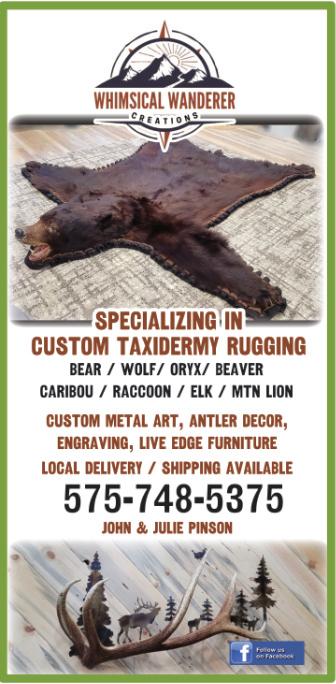

june 13th, 14th, 15th see ad page 16



Wander is a 2020American thriller film directed byApril Mullen and written by Tim Doiron. It stars Tommy Lee Jones,Aaron Eckhart, Katheryn Winnick, Heather Graham, and Roger Dorman. The story focuses on two conspiracy theorists and their investigation of a murder.
Arthur Bretnik is a mentally unstable conspiracy theorist and private investigator whose daughter was killed in a vehicle accident.
Prior to becoming a conspiracy theorist, he was a detective who investigated the unusual death of an individual whose chest appeared to have something explode out of it, and whose body was later stolen from the morgue. Bretnik and his friend Jimmy Cleats host a podcast that discusses conspiracy theories.
continues next page
13th, 14th, 15th see ad page 16
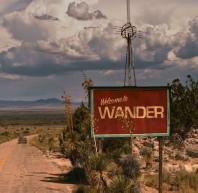
One of the podcast's listeners, Elena Guzman, hires Bretnik to investigate the death of her daughter Zoe in the small town of Wander, New Mexico, which she believes was a covered-up murder.
When he arrives, he meets Sheriff Luis Santiago and attempts to investigate the incident, but becomes convinced that he is being followed and that the death may be part of the same "conspiracy cover up" that caused the death of his own daughter years prior.
Bretnik's suspicions reach their peak when, after believing he is being followed by two men in an old Jeep Cherokee, he discovers they are in fact transporting a woman's body. When Bretnik goes to investigate, he discovers an underground laboratory where people are trapped and implanted with microchips.
Cleats arrives to investigate with Bretnik, and they discover that Elena and Zoe's identities


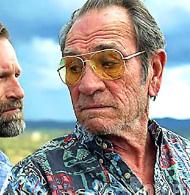
are fake and that they are actually Sofia and Martina Lopez, missing persons. The two set out to investigate.
When Bretnik and Cleats arrive at Sophia's, she attacks Bretnik and claims Cleats is involved before her microchip suddenly explodes, killing her.
Cleats claims the "involvement" she mentioned is that he got her to report the death to Bretnik for money, and the two bury Sofia's body in the desert.
Bretnik and Cleats then decide to investigate the garage, but, before going, Bretnik places an envelope in a mailbox. Bretnik and Cleats then sneak into the garage to record proof of the laboratory and expose it to the public.
Meanwhile, Bretnik's lawyer, Shelly Luscomb, discovers Bretnik's empty trailer and determines he has traveled to Wander.
As Bretnik and Cleats enter the laboratory, the film cuts forward june 13th, 14th, 15th see ad page 16
continues next page
continued from previous page
to show Bretnik being involved in a shootout before being apprehended by FBIAgent Nick Cassidy, who arrives with Shelly.
Bretnik is questioned, where he explains what happened after he and Cleats arrived at the garage.
When Bretnik and Cleats entered the laboratory, Bretnik learned the microchips are being used to control immigrants, minorities, and the lower class.
However, the laboratory was attacked by one of the men from the Jeep, and Cleats was shot.
Bretnik was saved by a woman named Elsa Viceroy, apparently from the CIA, and the two met with Sheriff Santiago, who was revealed to also be working against the microchip operation.
Elsa and Santiago explained that the victim whose body was stolen from the morgue, as well as Martina, were both embedded with microchips.
Bretnik, Elsa, and Santiago planned to assassinate Victor Canton, the inventor of the microchips, who was on a rare visit to Wander.
Sheriff Santiago met with the inventor and the men from the Jeep at the garage, while Elsa and Bretnik moved to ambush them. Elsa shot the others, including Sheriff Santiago, before allowing Bretnik to avenge the

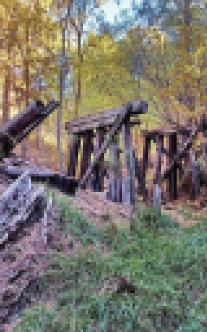

deaths of his family and Cleats; Bretnik shot Canton multiple times, killing him.
Elsa then told Bretnik to wipe the data from the computer inside the garage before leaving.
Upon exiting the garage, Bretnik was apprehended by Agent Cassidy.
In the present, Shelly informs Bretnik that the medication he takes for his mental trauma causes anxiety and delusions, and tells him that the garage was fully derelict and empty, the morgue he investigated and found bodies in was not in use for years, and that Cleats' decapitated body was found in Bretnik's car.
Bretnik, unable to believe whether the events in Wander were true or simply his own delusions, and faced with the possibility that he killed his friend, breaks down.
Bretnik is placed in a holding cell awaiting placement in a Story continues page 132
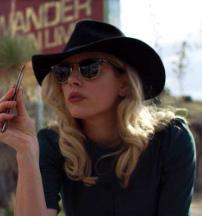
june 13th, 14th, 15th see ad page 16
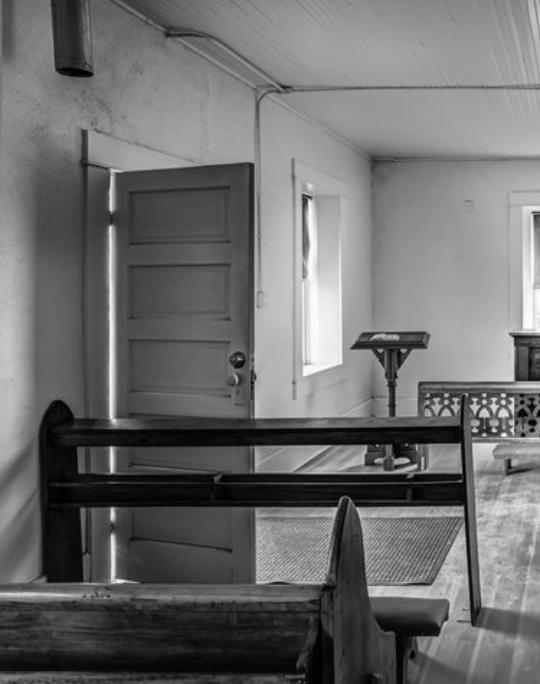
nichols’ ranch 7th annual cherry festival
JULIE DAVIS BASILE: HM PEOPLE "Testament of Faith."
Taken in the church at the Lake Valley Ghost Town, Lake Valley NM
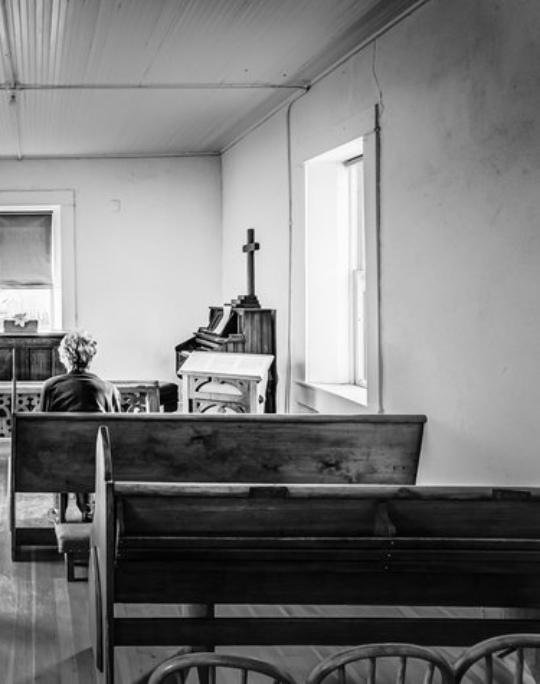
june 13th, 14th, 15th see ad page 16
Continued from page 129
mental institution. He is met in his cell by Elsa and an aliveand-well Cleats. They explain to Bretnik that the entire investigation was part of their plan: Bretnik was being used all along as a way to tie up loose ends. Bretnik's mental state ensured he would continue to investigate and allowed them to pin any blame on the events in Wander on him.
In the mental facility, Bretnik barricades himself in his room and digs in his chest with a stolen pen.As he lies on the floor bleeding, he laughs and smiles; in his hand is his own microchip, proving his earlier fears that he had a microchip placed within himself.
Meanwhile, the envelope Bretnik mailed earlier is sent to Shelly. Inside the envelope is all of the evidence and photographs Bretnik took of the laboratory, which could allow the conspiracy to be exposed.




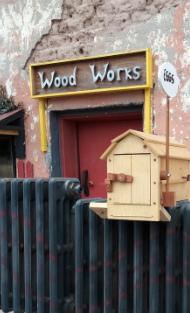
Continues next page
june 13th, 14th, 15th see ad page 16
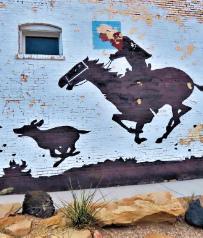
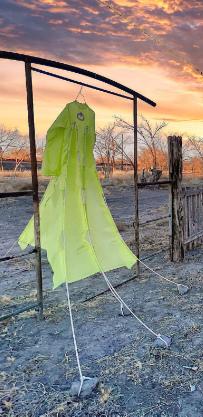
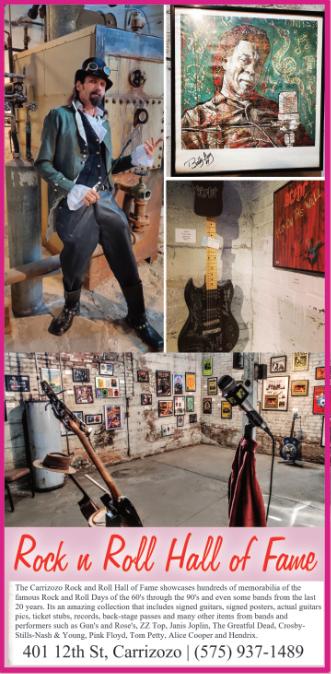

CHANEL FLORES: 1ST PLACE
PEOPLE — "A Soul on the Move."
A soul on the move, with heart aglow, she chases horizons, as the miles go slow, And though the journey's long, and winding be, her spirit remains, wild, carefree,
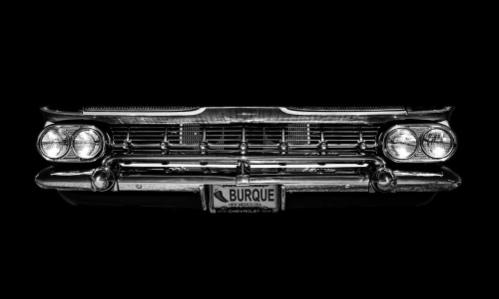
CHARLES NEWMAN: HM2 NEW MEXICO EXPERIENCE — "1959 Low Rider Impala Grill aka Burque" Owner Rickey Sanchez
june 13th, 14th, 15th see ad page 16

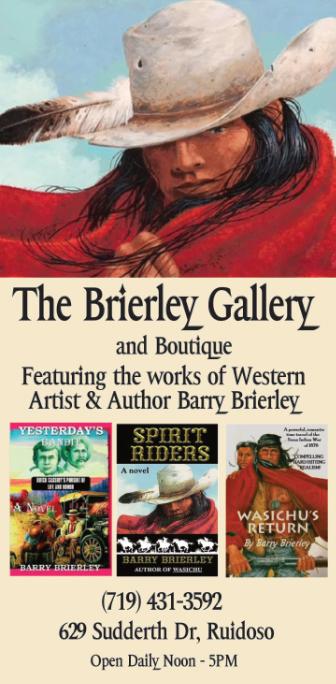
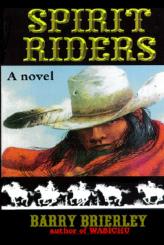
Chapter One
“What the hell is it about that hat?”
Sheriff Josiah Webb stepped down from his tall horse. The small crowd of men in front of the Watering Hole Saloon stepped back giving Josiah’s lean form some leg room.
The handful of buildings adjoining the isolated saloon were located a few wind-swept miles from the town of Oglala.
The Watering Hole’s location was on the edge of a Sioux Reservation where alcohol was prohibited, which naturally made it a hot bed of controversy.
The sheriff, as he led his chestnut to the hitching rail, acknowledged the nearby familiar faces with a friendly Story Continues Next Page june 13th, 14th, 15th see ad page 16
nod. He welcomed the saloons occasional disturbances because they gave him an excuse to get away from Oglala’s dusty thoroughfare and the boredom of his daily routine.
As Josiah secured his horse, two newcomers to the area were looking him over without his awareness. One glance at the two men was enough to identify them as an elderly pair of hardnosed, old-time Westerners.
What they saw in Josiah was a tall, wide-shouldered man with a horseman’s slim hips. They took a second look when he ambled by and saw him as a man in his mid to late thirties.
He was wearing a tan, lowcrowned hat with a moderately narrow brim, and was dressed in a brown suit, white shirt, and a removable white store collar.
In contrast to his dress, his face was creased and weathered from time spent out-of-doors.
With a final glance at Josiah’s store-bought haircut and his thick, trimmed mustache, the two exchanged looks. One turned his head and spat a brown stream into the dust; the other shook his gray mop of hair and muttered, “Short Horn.”
The derisive label was one of the current terms for someone who didn’t measure up to western standards.As Webb eased through the crowd of

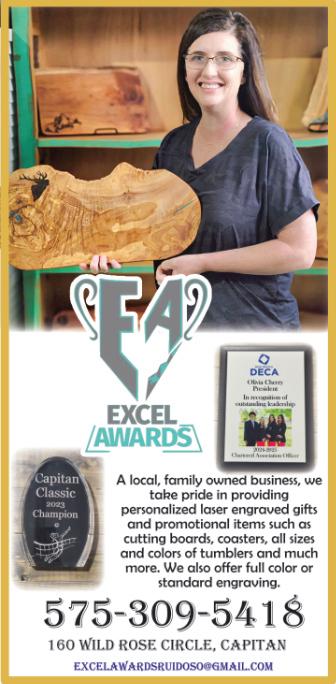
spectators a blocky figure, sporting a huge, handlebar mustache and slicked-down hair, stepped forward.
Zeke, bartender and proprietor of the Watering Hole, was wearing a stained apron around his more than ample girth. The sickening sweet scent of the pomade on his dark, oily hair preceded him.
As usual he was burdened with the responsibility of having a bad attitude. He always seemed to have it close at hand just in case he found an available ear that might be interested in listening to a few of his many complaints. He should have known that Josiah Webb was the wrong person to try it out on.
“It’s about time, Sheriff! That goddamned Injun, Killdeer, is inside and is about to cut Bob Fey’s liver out!”
Josiah stopped his approach to the saloon door and stuck his face about two inches away from the bartender’s waxed mustache.
“Somebody been sellin’him whiskey again, Zeke?” Webb’s dark blue eyes snapped with a fire that made Zeke suck in his belly, and tuck in his chin.
“It weren’t me, Sheriff!” Giving Zeke a disbelieving look, Josiah once again moved toward the door. Zeke’s familiar whine stopped Josiah in his Story Continues Next Page
june 13th, 14th, 15th see ad page 16
tracks. “He’s wearin’that goddamned hat again, Sheriff! Why don’t he stay on the reservation where he damn well ...”
With two quick strides the sheriff’s face was again inches from Zeke’s mustache. The bartender’s irritating whine stopped.Anger was evident in Webb’s voice as he queried,
“What about his goddamned hat? You know, you ain’t the first geezer I’ve heard bitchin’about it.”
Perplexed, Webb silently asked himself, “Why is it that the Indian haters are the ones doing the complaining?”
As he turned away from Zeke’s indignant look, Josiah muttered to himself, “What the hell is it about that hat?” Still captured within the sun’s bright rays Webb stopped just short of the saloon’s doorway and peered over the bat-wing doors to give his eyes time to adjust to the interior’s contrasting gloom.
He quickly scanned the room. Only two people were inside. Jack Killdeer, standing alone, was half sprawled across the bar. The Lakota’s head rested on his outstretched arm and his long, blueblack hair fanned out over the top of the mahogany bar.At the end of the extended arm a long, double-edged knife dangled from his hand.Afew steps away a large, balding white man crouched against the base of one of the saloon’s many support pillars. The big man saw Webb peer over the half-doors and his eyes
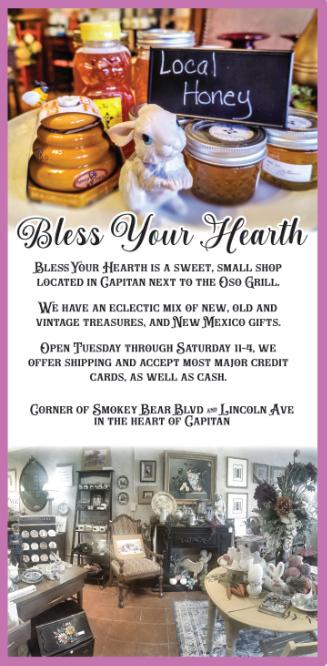

swept over the sprawling figure at the bar.
Widening with fear, his eyes darted back and forth between Josiah and the young Lakota Sioux. Blood had seeped from his nose and was smeared across his thick lips.
With the slight sound caused by Josiah’s entrance, the young Indian raised his head and studied Webb through bleary, whiskey-hazed eyes.Athin line of blood spots were splattered across the sleeve of his faded, gray, pin-striped shirt while fresh abrasions were evident on the knuckles of his right hand.
“Sheriff, he tried to kill me! He’s got a knife in his hand! Shoot him!”
Ignoring Fey’s plea, Webb’s unsmiling gaze remained locked on the Lakota, Jack Killdeer, who calmly returned Josiah’s look. Webb suddenly smiled and glanced at the cowering Bob Fey as he said,
“Can’t do that, Bob. I don’t wear a gun. Remember?”
As he spoke, Josiah pulled his suit coat aside to show that he was unarmed.
“You gotta help me, Sheriff! He said he was gonna scalp me!”
Webb’s attention returned to the Lakota. “Is that right, Killdeer?” Jack Killdeer’s face Story Continues Next Page
june 13th, 14th, 15th see ad page 16
remained impassive, but Josiah could have sworn that he saw a smile lurking behind the glittering black pools that were his eyes.
Killdeer shrugged and said, “I said I would kill him ... not scalp him.”
Josiah abruptly stepped forward and slowly approached the young Lakota. Killdeer straightened but made no threatening move as Webb stopped a few feet short of the watchful Sioux. Josiah’s voice snapped with authority as he asked,
“Why! Why kill him?”
For the first time, Killdeer’s eyes bored into Josiah’s as he made an emphatic gesture toward a stained and battered hat sitting on the bar. An unexpected show of anger added emphases to Killdeer’s words as he replied,
“He slapped my hat off my head and would not give it back!”
In spite of having seen the hat many times before Josiah was compelled to once again look it over. Once upon a time before grease and dirt had taken over, the hat had been a creamy white. Now gray with its wide brim all crimped and creased, the only thing left of any beauty was an eagle feather tied to a leather thong that passed for a hatband.Abullet hole high in the crumpled crown gave Josiah the discomforting illusion that it was an eye watching him.
As suddenly as it had arrived, Killdeer’s anger disappeared.A


smile tugged at his lips as he glanced at Fey’s balding head before commenting,
“I do not wish his scalp ... someone already took it.”
Josiah had to quickly turn his head so that Bob wouldn’t see his involuntary smile.
Bob’s abrasive, angry voice destroyed all thought of humor when he shouted,
“Gawd-damn, murdering, red devil sonovabitch!”
Killdeer, knife poised, lunged toward Bob Fey. In an eye-blink, Josiah was between Fey and the enraged Sioux. Only Josiah’s quickness saved Fey from the sharp point of the knife. When his fingers clamped onto the wrist of Killdeer’s knife hand, Webb knew he couldn’t hold him for long. The Lakota’s strength was as unexpected as it was impressive. Shifting his feet, he released the wrist and instantly slammed his forearm into Killdeer’s angry face.
As he sagged from the powerful blow, the sheriff followed with a short, right-hand punch that landed flush on the younger man’s jaw.
Dazed, Killdeer’s legs buckled and he slumped down toward the floorboards. Josiah caught him and lowered him gently to the sawdust covered floor. Snatching Killdeer’s
Continues next page
june 13th, 14th, 15th see ad page 16
Continued from previous page
knife from where it had landed among the grimy, tobaccostained wood chips, Josiah pointed it angrily at Bob Fey.As the bully recoiled from the sudden gesture, Josiah said,
“If I ever hear of you calling a Lakota, or any other Indian, a murderer without cause ... you and me are gonna dance bareknuckle. You hear?”
Fey stumbled to his feet, swiped at the sawdust on his pants, and ran a meaty paw across the blood on his upper lip. Still watching Fey, Josiah set the knife on the bar and attempted to get the dazed Killdeer to his feet.
“I hear ya, Sheriff. I didn’t know you was such an Injun lover.”
At the big man’s words, Josiah looked up. Seeing the sneer on Fey’s face, he released Killdeer and stood up straight. Bob Fey tugged his pants higher and in a bully’s swagger stepped past Josiah and viciously kicked the stunned Killdeer in the stomach. Enraged by the cowardly act, Josiah swiftly stepped over Killdeer and moved inside the reach of Bob Fey’s long arms and threw a succession of left and right punches to the bully’s head, flattening his nose and mashing his lips.
The rapid blows drove the bigger man backwards.As he


stumbled into a table, Fey’s meaty, porcine face expressed fear, bewilderment, and pain.
An overhand right once again smashed into the bully’s already swollen nose and splattered blood in all directions. The solid punch dropped the man to his hands and knees, partially stunned and completely bewildered.
Fey shook his head and blood splashed and dripped onto the sawdust like scarlet rain. When unexpected exclamations of surprise, and anger, came from the open doorway, Josiah shook the pain from a bruised fist and glanced toward the open door where several men struggled for position to allow them to see inside.Angrily, Josiah Webb exclaimed,
“If you boys are of a mind to step inside and give bully Bob a hand and have a go at me, you’re welcome to try. If not, get the hell away from the door! Bob ‘n me don’t need no audience.”
Several men in the doorway released the batwing doors and turned away, grumbling. One of the men caught the half door and lingered; it was one of the oldtimers who had been skeptical of Josiah Webb’s ability to handle his job. His mouth was still gaping when Josiah’s sharp query, “What do you want?” startled him.
The old-timer swept his slouch hat off and said, “I just thought ye june 13th, 14th, 15th see ad page 16
Story continues page 147
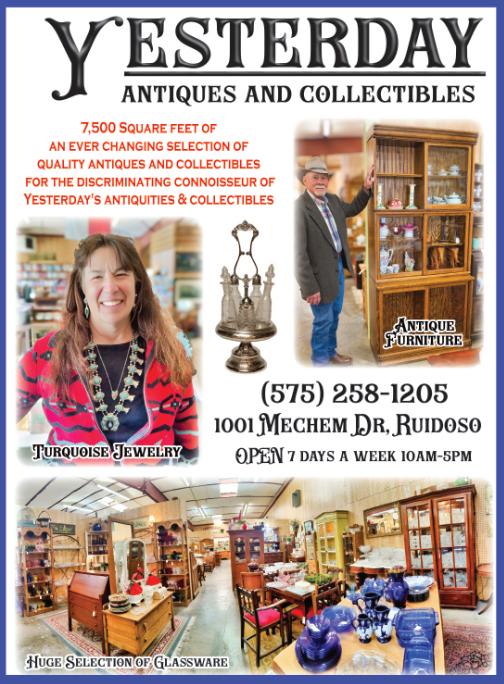
nichols’ ranch 7th annual cherry festival

Continued from page 145
might like a bit of help getting the Indian fella outside, Sheriff.”
Josiah’s face softened as he nodded and said,
“Thanks, I’m obliged. See if you can bring him around.”
Webb then placed his attention back on Bob Fey who was having difficulty sorting out what had happened to him.
As the sheriff stared down on the bully, habit from the days when his mustache was full and untrimmed caused him to use the knuckle on his fore-finger to smooth it, first left then right.
When the old boy crouched over Killdeer, Josiah bent over Bob, who was still trying to shake the cobwebs out of his head, and said,
“Guess you’d best practice your readin’and writin’... guess you didn’t read between the lines and catch the message I threw your way. You got it all figured out now ... Bob?”
Still on his hands and knees, Bob spit a glob of blood into the sawdust and wearily nodded his head.
EDITORS NOTE Copies of the story Spirit Riders are available from The Brierley Gallery. See their ad on page 137
june 13th, 14th, 15th see ad page 16
RECIPE OFTHE MONTH from ROSEMARY’S HERB SHOP

Southwestern Chicken Powered Salad
This Southwest chicken power salad is not your average green salad. Packed with chicken, beans, corn, and hearty vegetables, and dressed with a delicious cilantro vinaigrette.
Vinaigrette
1/2 cup chopped fresh cilantro
1/4 cup good quality olive oil
2 tablespoons freshly squeezed lime juice
1 teaspoon honey
1 teaspoon Rosemary’s garlic
1/2 teaspoon Rosemary’s cumin
1/4 teaspoon Rosemary’s cayenne pepper
2 tablespoons Mexican crema Salad
1 (5-ounce) container mixed salad greens

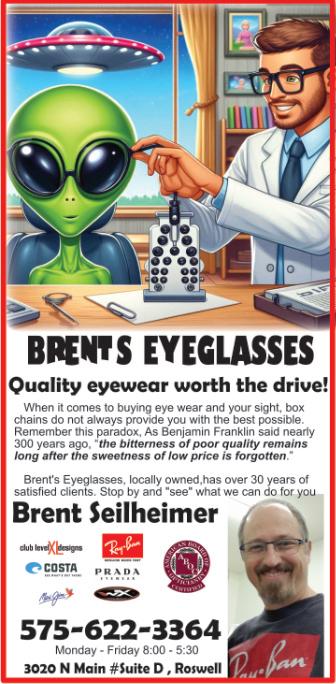
1 cup diced cooked chicken
1 (15-ounce) can pinto beans, rinsed
1 (15-ounce) can whole kernel corn
1/2 yellow bell pepper, seeded and diced
1/2 red bell pepper, seeded and diced
1/2 cup halved cherry tomatoes
1/2 cup crumbled Cotija cheese
1 avocado - peeled, pitted, and sliced
4 thin slices red onion, or to taste
1 jalapeño, sliced, or to taste (optional)
2 tablespoons raw pumpkin seeds
Directions
For vinaigrette, place cilantro, olive oil, lime juice, honey, garlic, cumin and cayenne in a bowl or a blender and pulse several times. For a creamy dressing, include the optional Mexican crema (for salad) line a serving plate with mixed salad greens.Arrange chicken, pinto beans, corn, yellow bell pepper, red bell pepper, cherry tomatoes, cotija, avocado, and red onion in a pleasing design on top of greens.
Drizzle with vinaigrette (place all ingredients in a large salad bowl and toss with vinaigrette). Garnish with pumpkin seeds and jalapeño slices.
13th, 14th, 15th see ad page 16

I, Daniel Carabajal. was born at Lincoln, New Mexico, Dec. 12, 1872, and have lived in Lincoln County continuously since that time.
I remember seeing Billy the Kid leave town the day he killed Bob Ollinger and J. W. Bell, his guards at the old courthouse in Lincoln. We lived just below the old Torreon in Lincoln at the time.
I was up town playing with some boys just across the street when he killed the guards.
We hid behind a picket fence and watched Billy ride out of town. We were too scared to go and see the two men that he had killed, we were afraid that he would come back and shoot us.
All the people in Lincoln were afraid to come out for a long time after Billy the Kid rode away towards Fort Stanton. I wanted to go and see the men he had killed but I was afraid to go.
Credit: Library of Congress, Manuscript Division, WPAFederal Writers' Project


june 13th, 14th, 15th see ad page 16
